
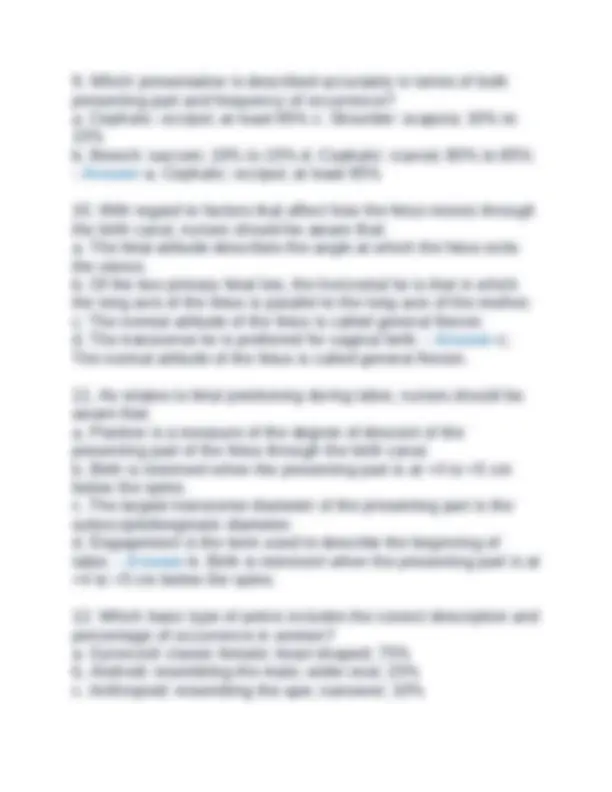
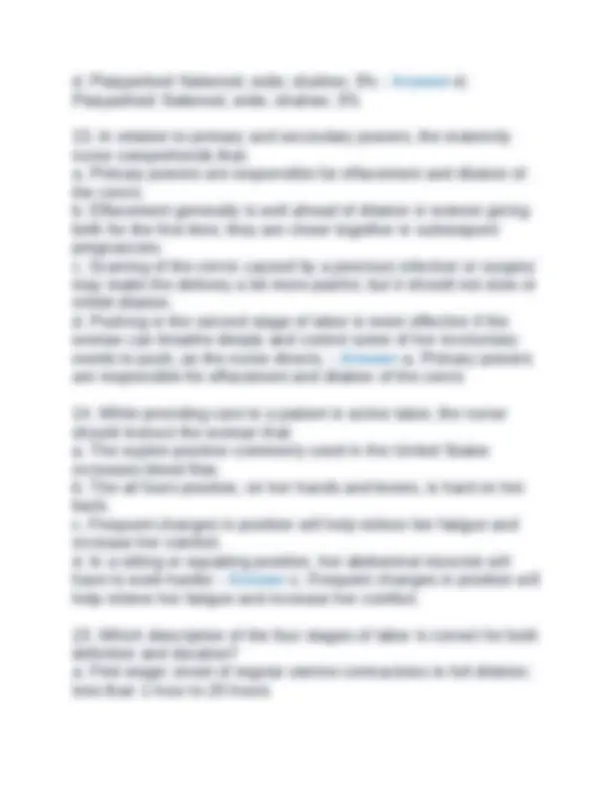
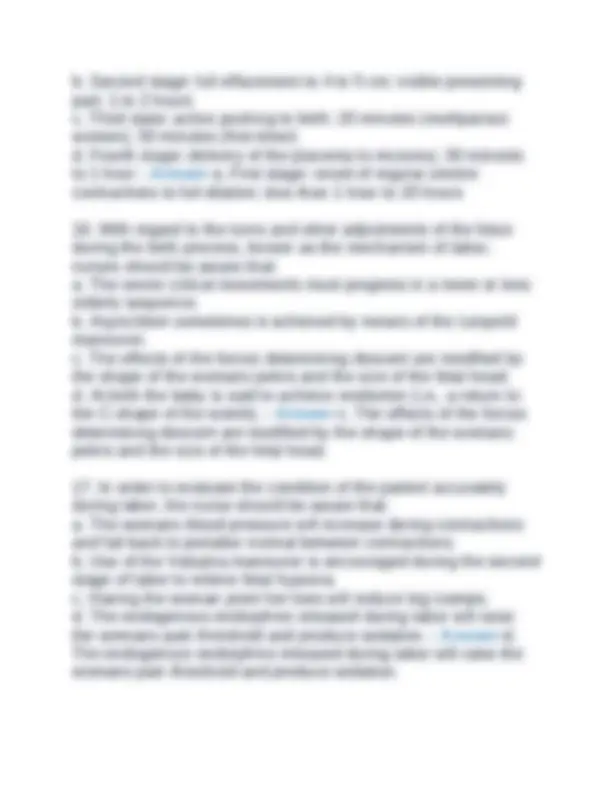
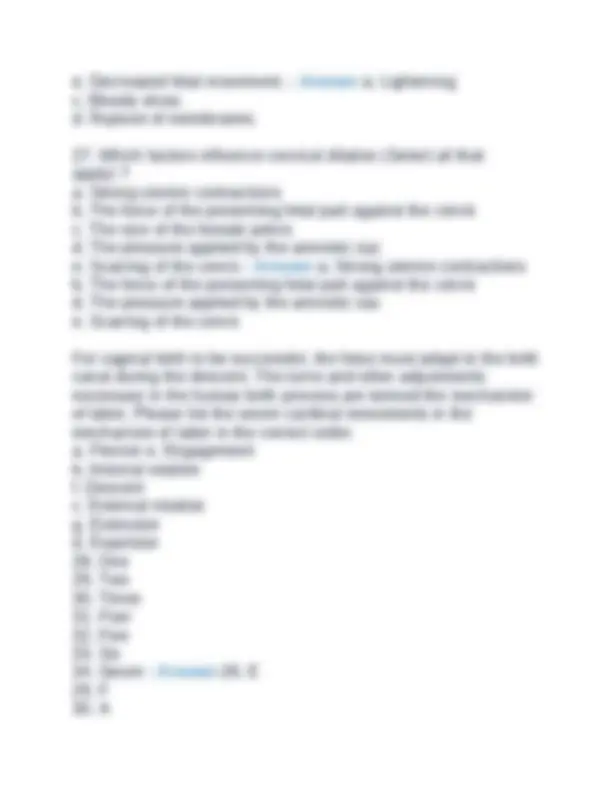
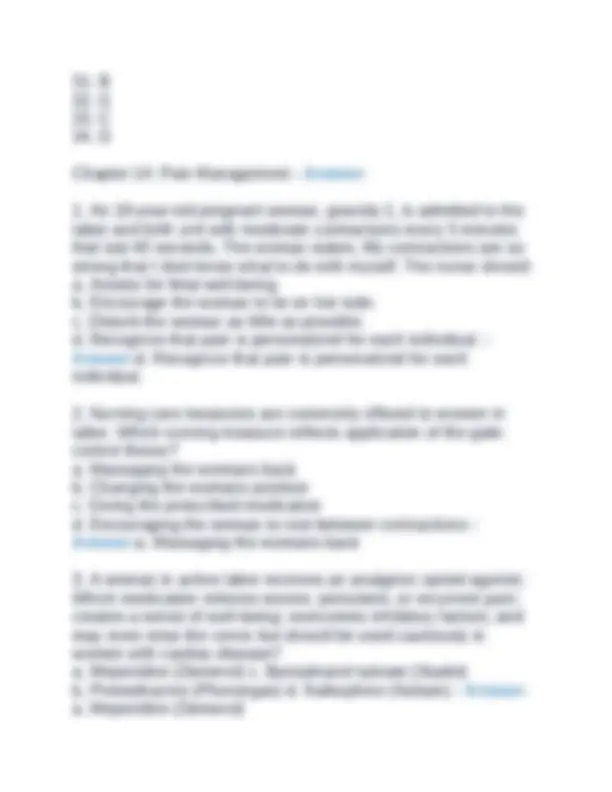
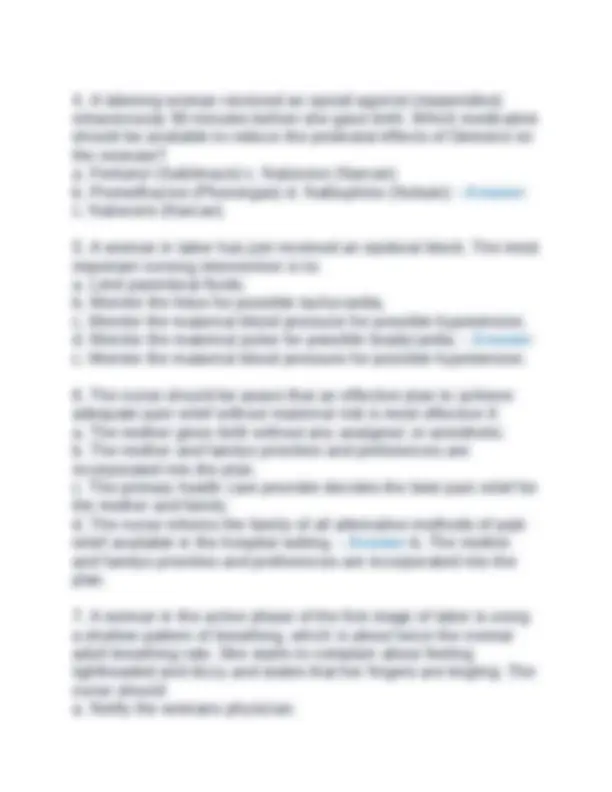
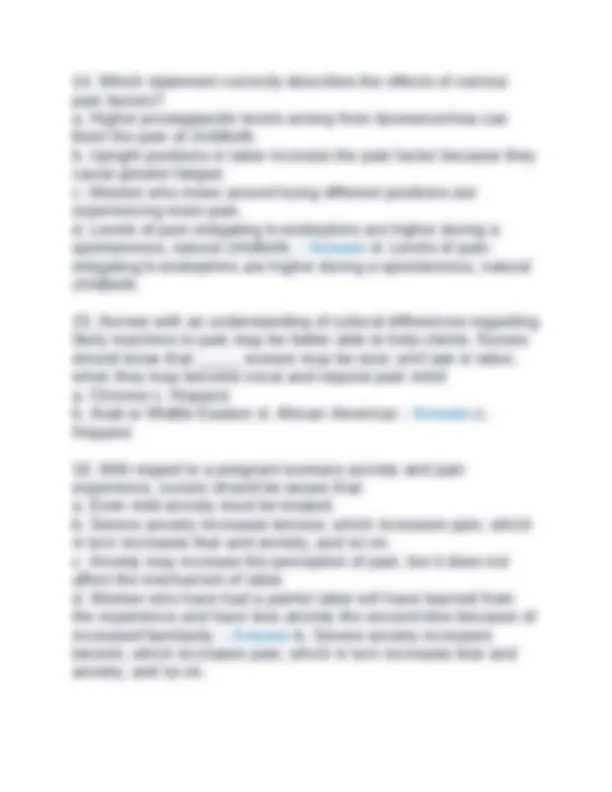
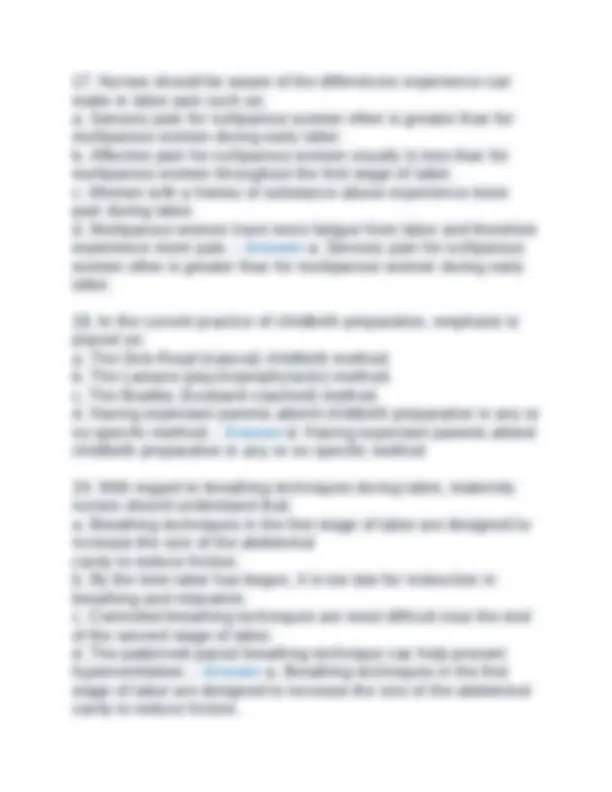
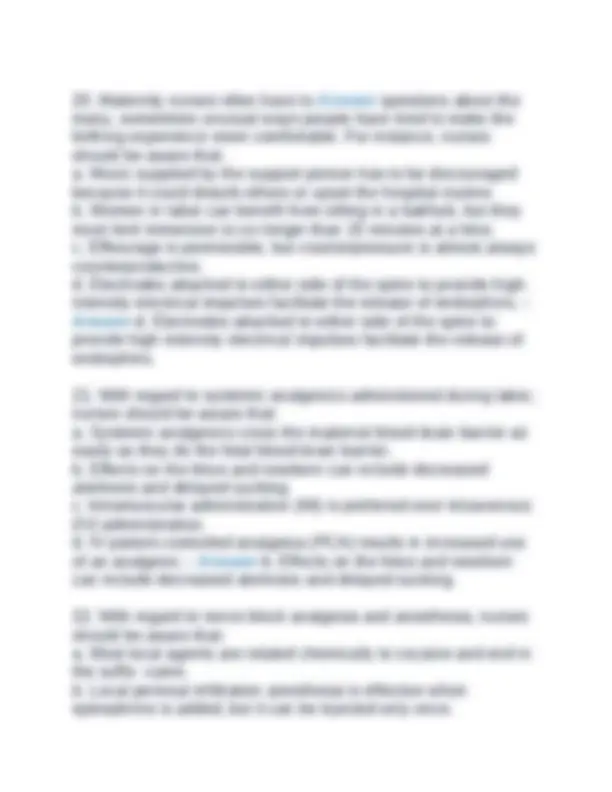
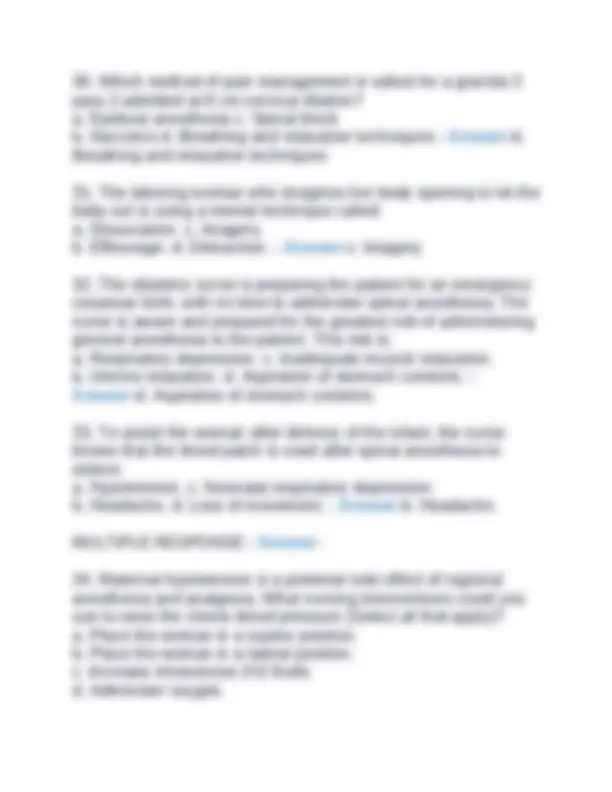
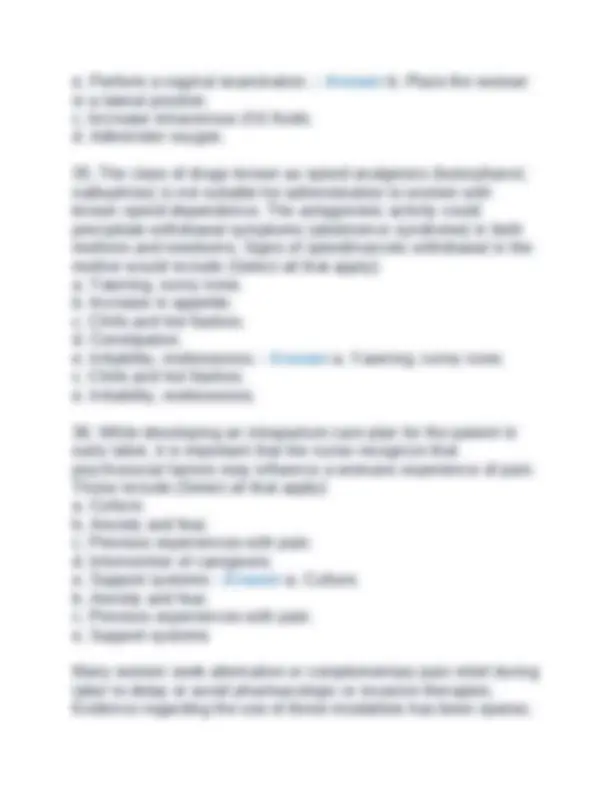
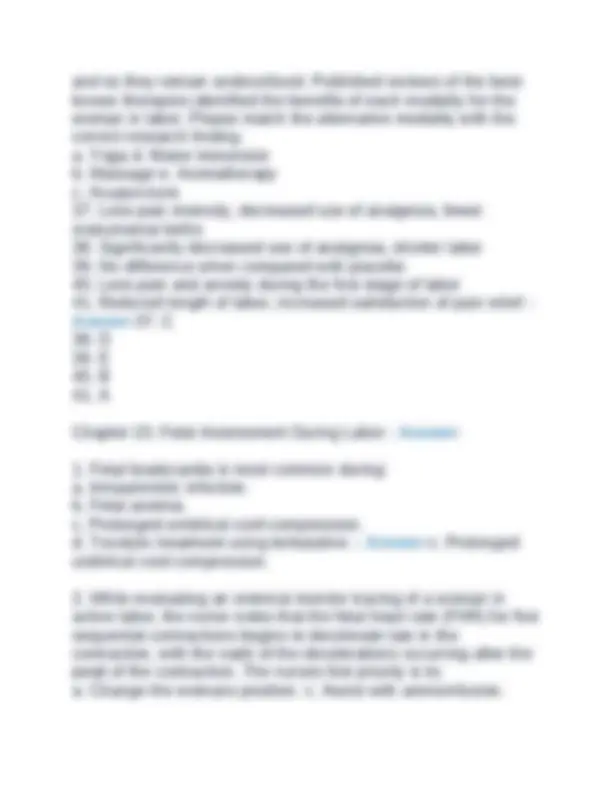
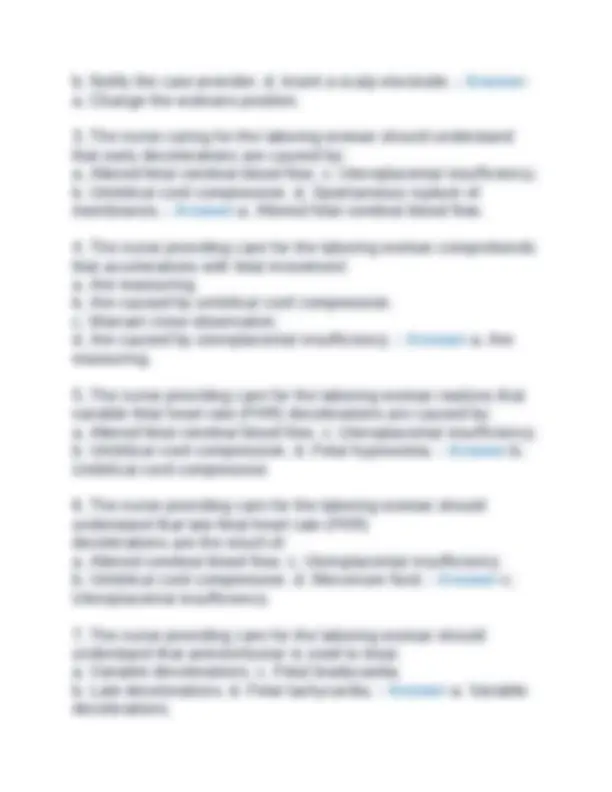
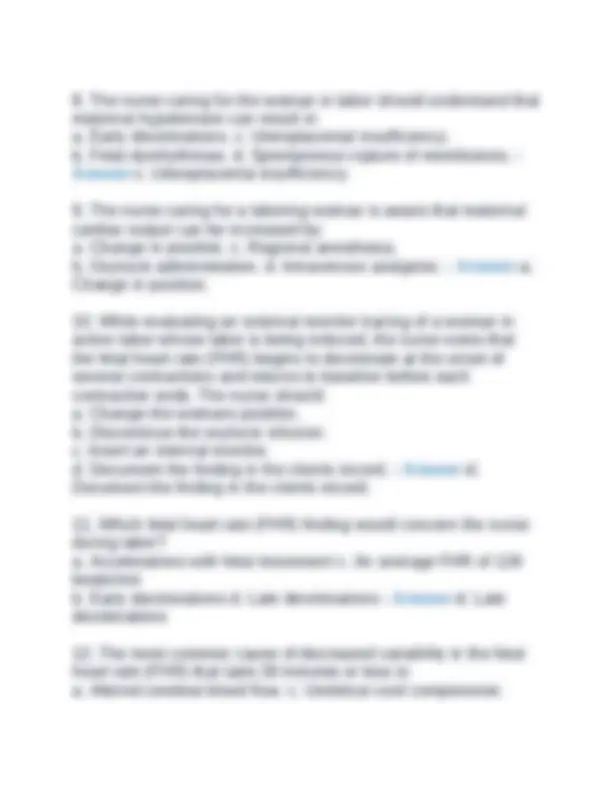
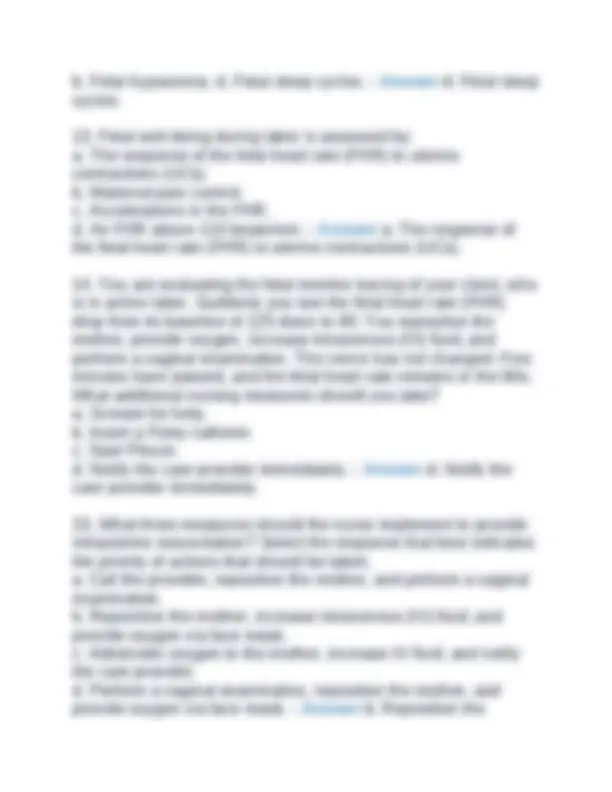

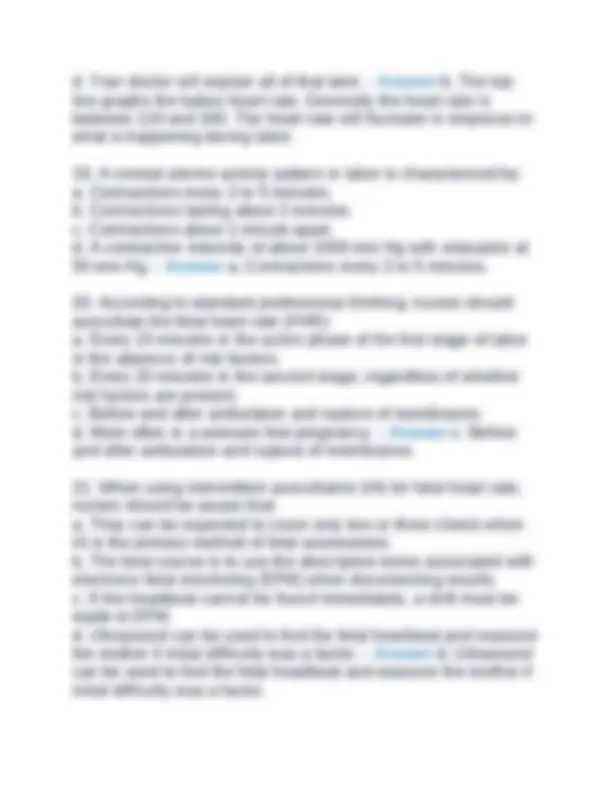
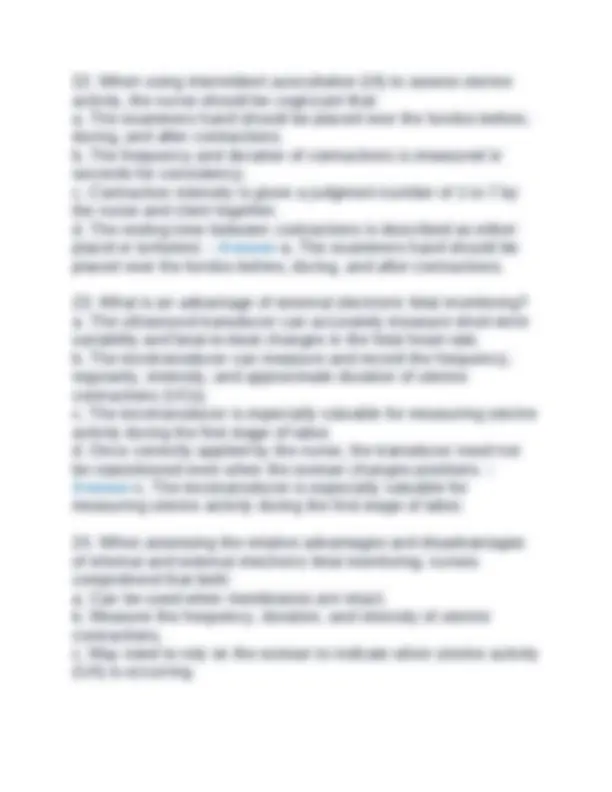

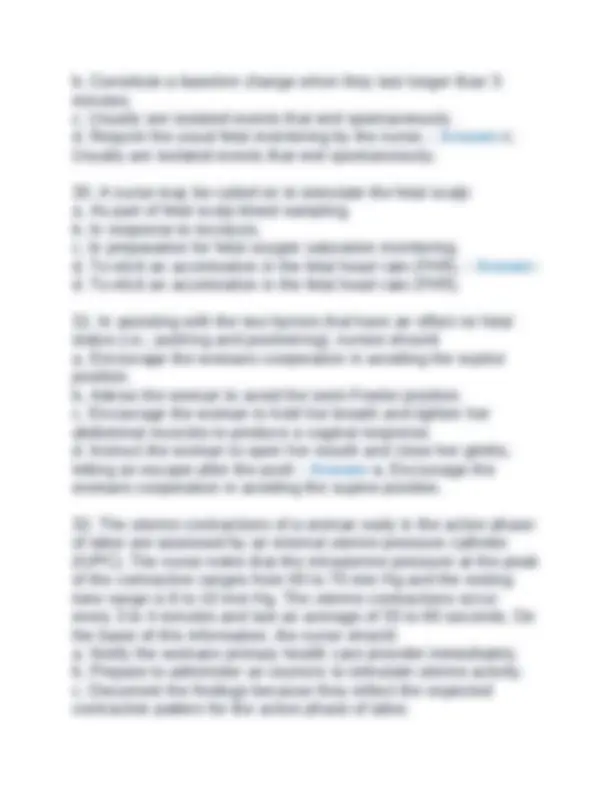
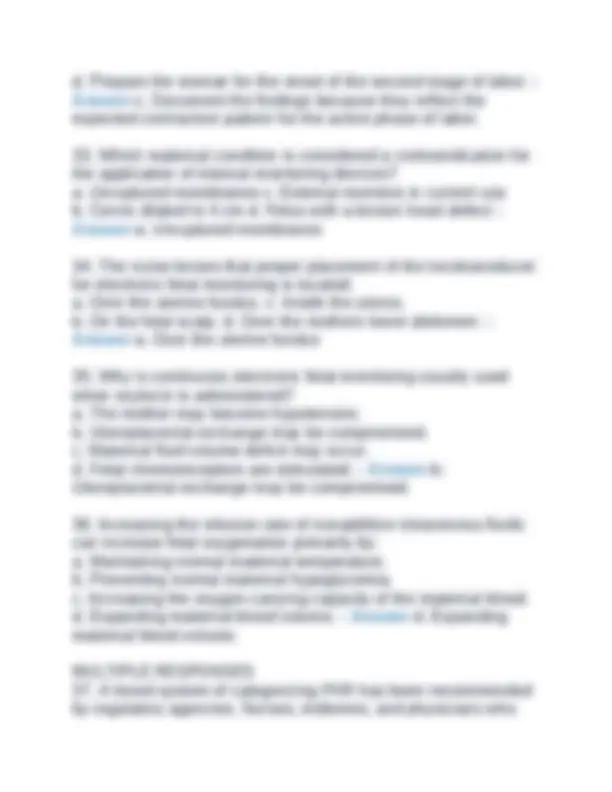

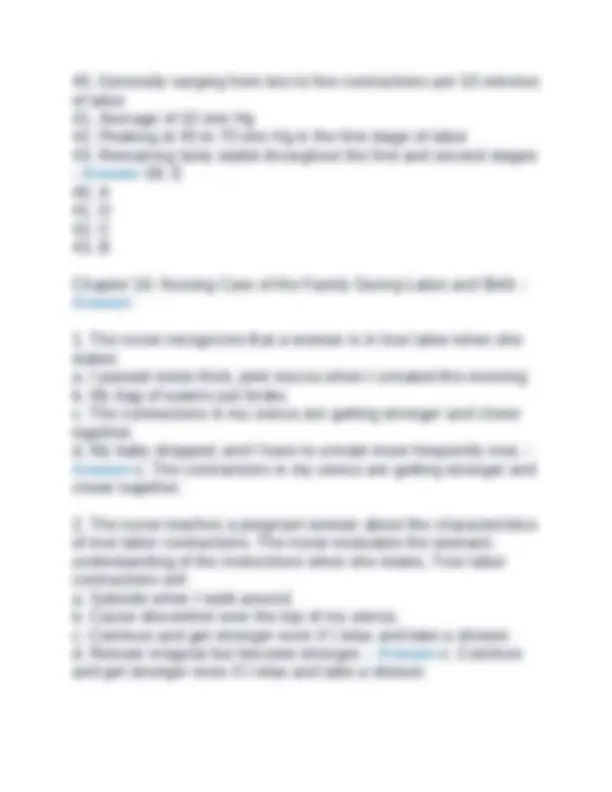
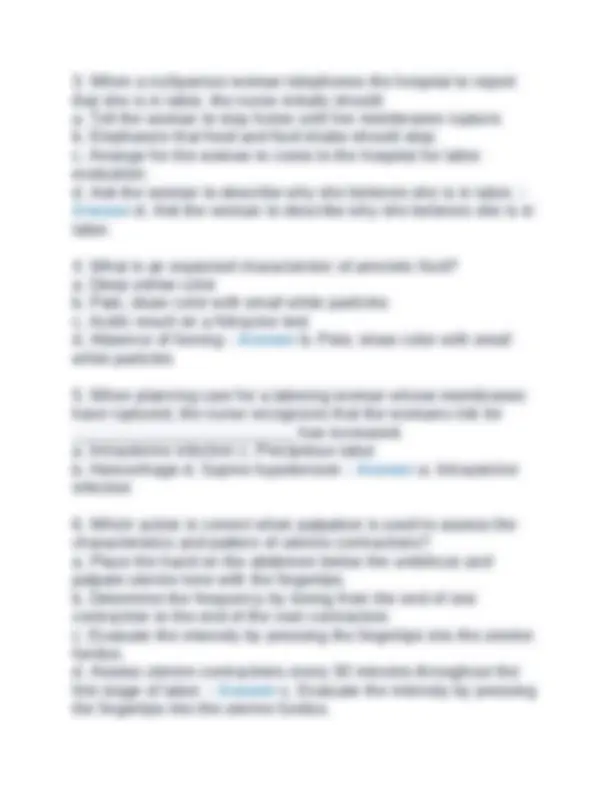
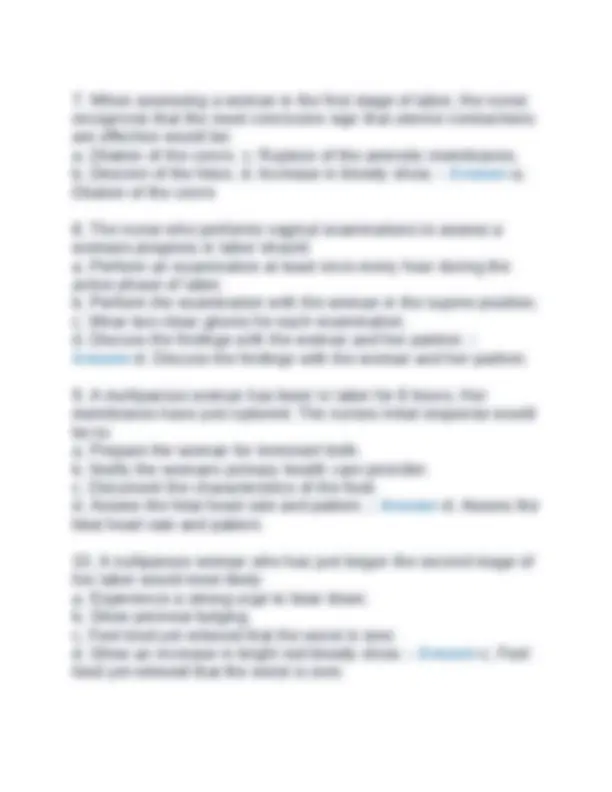
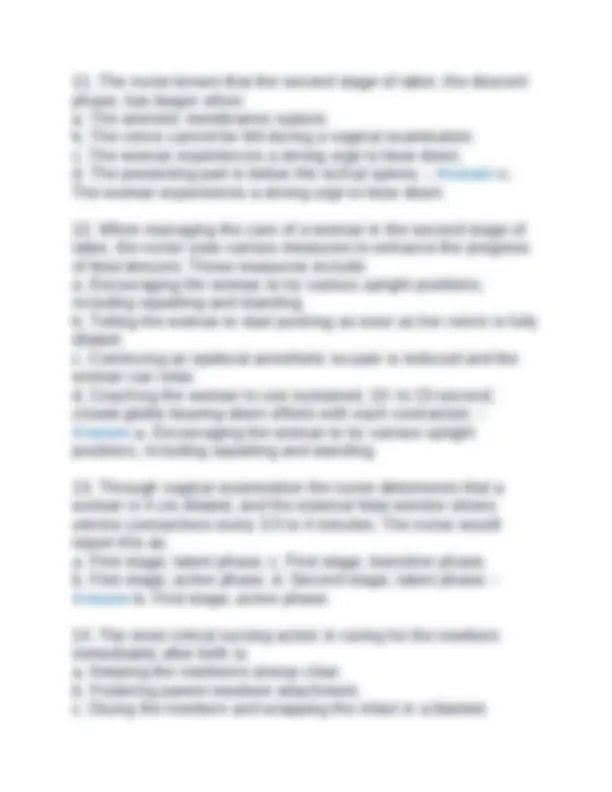
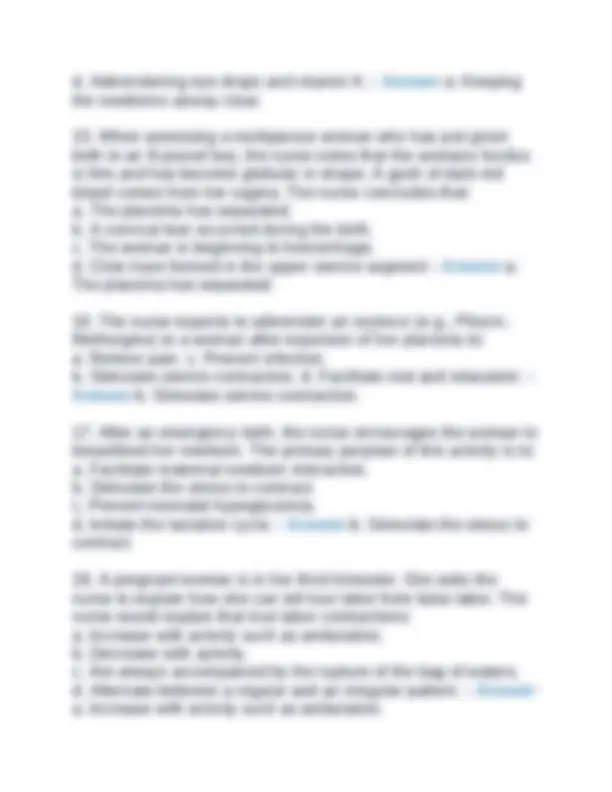
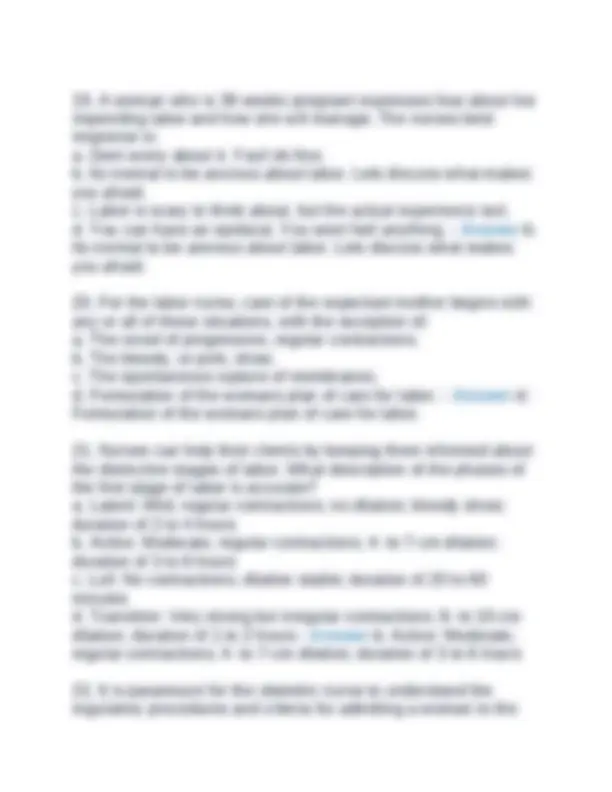
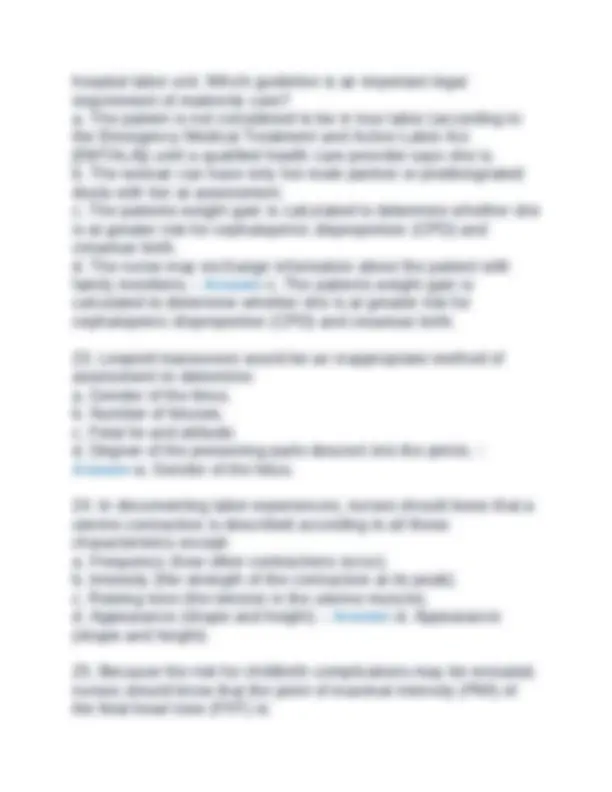
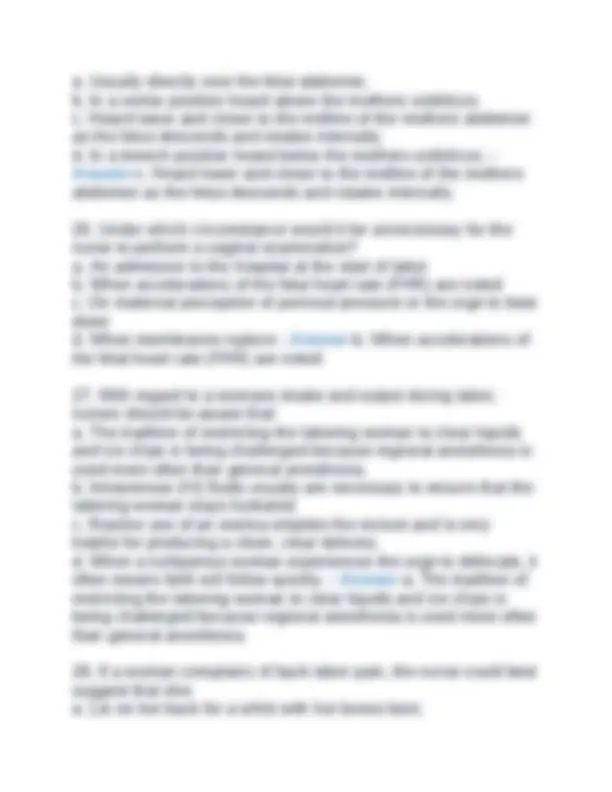
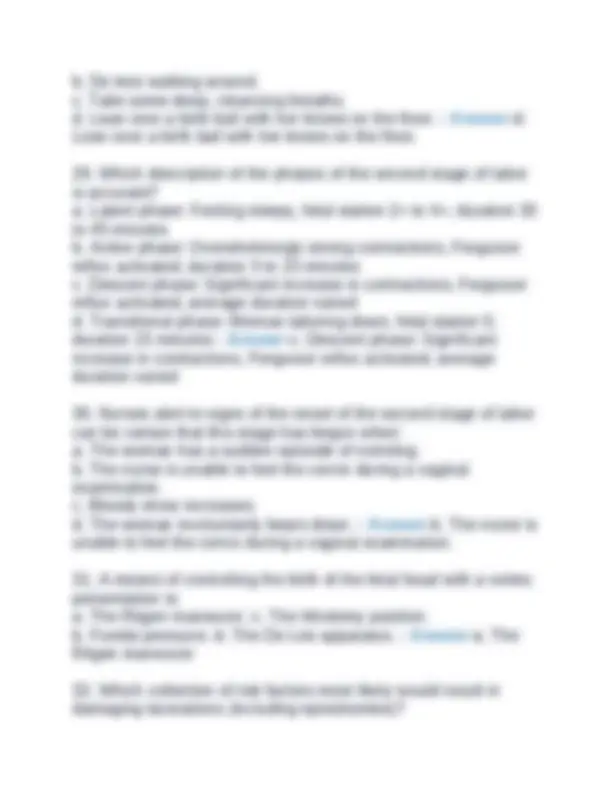
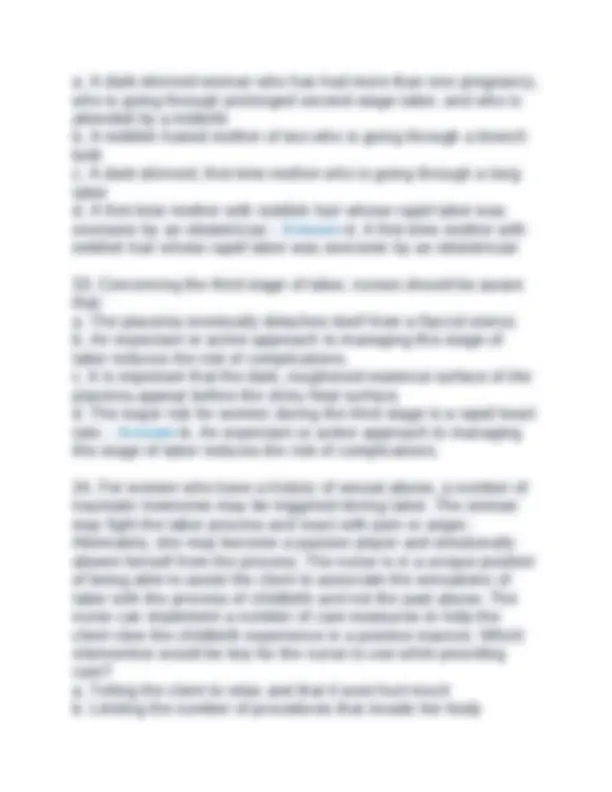
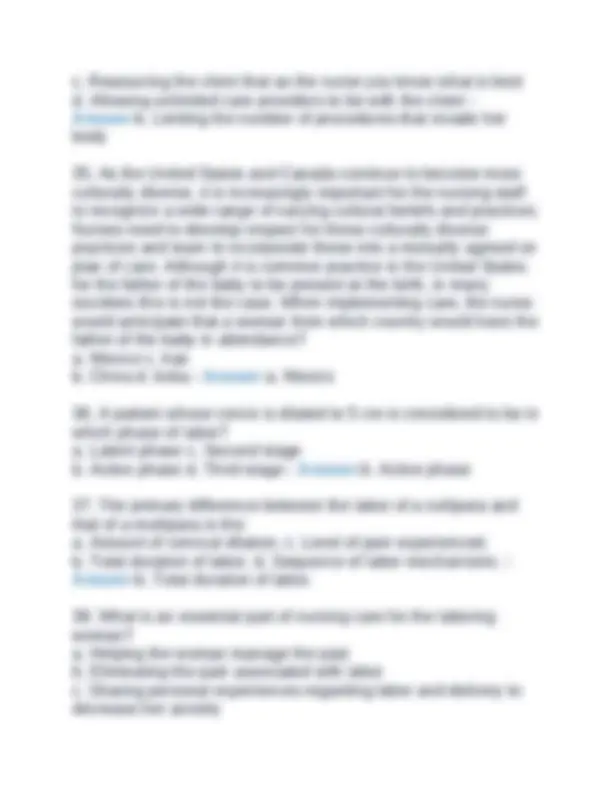
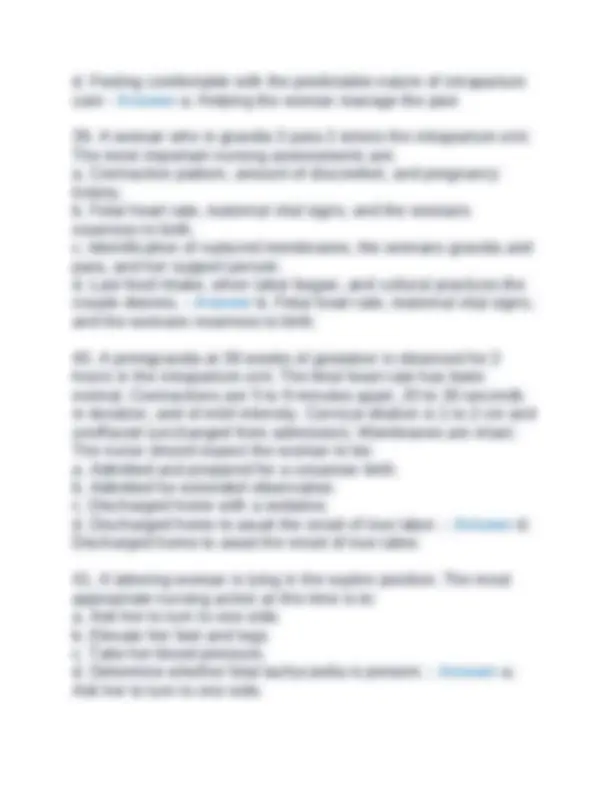
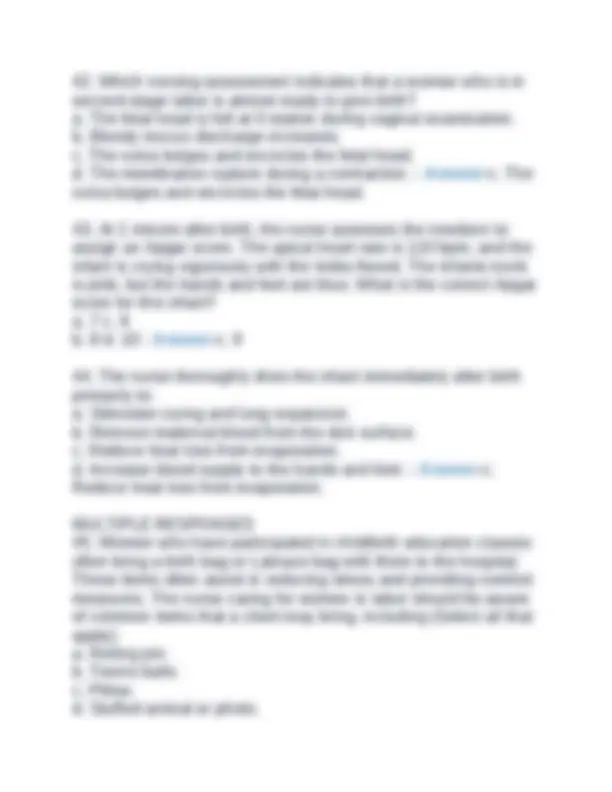
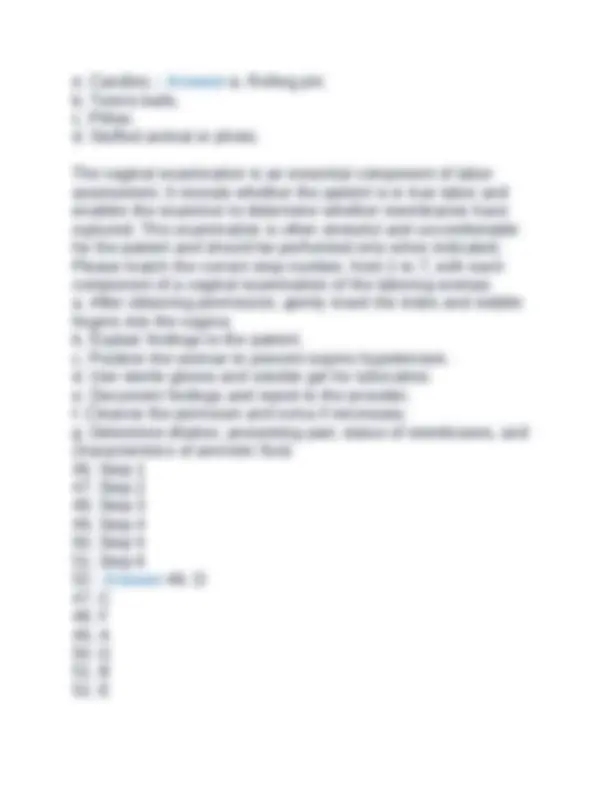
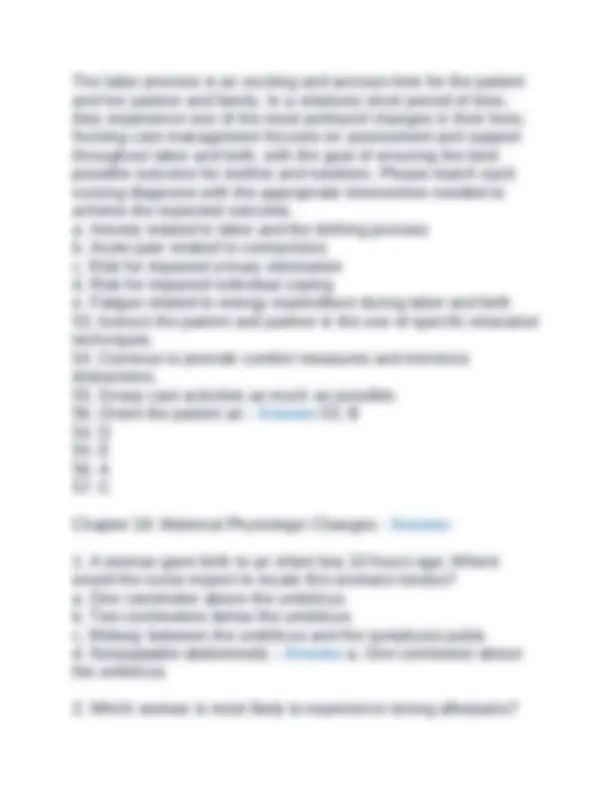

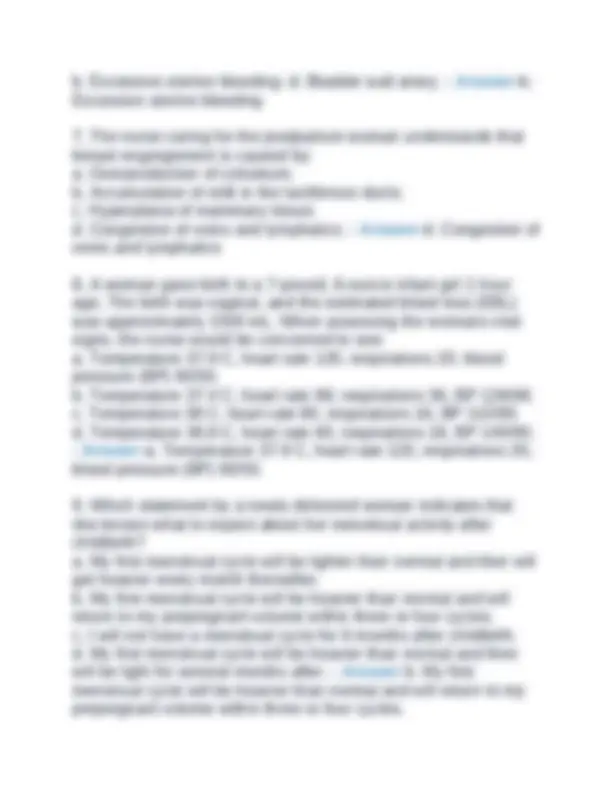
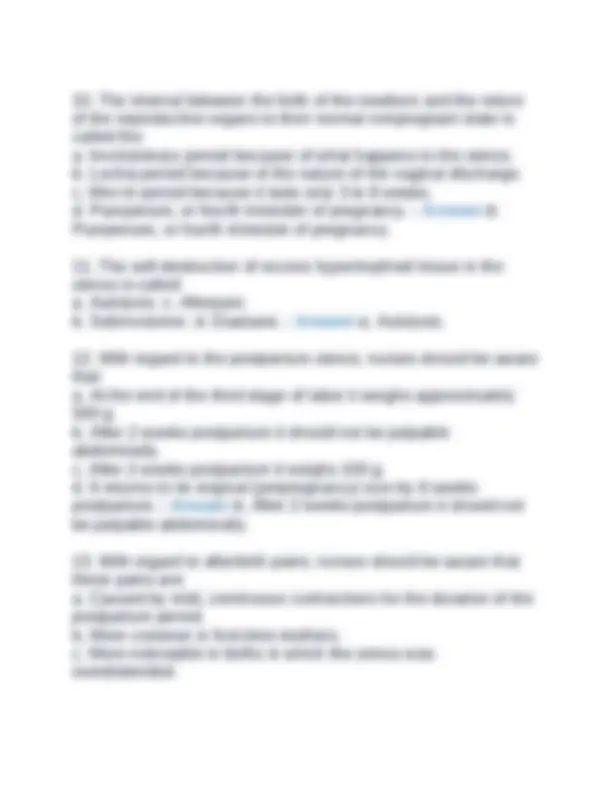
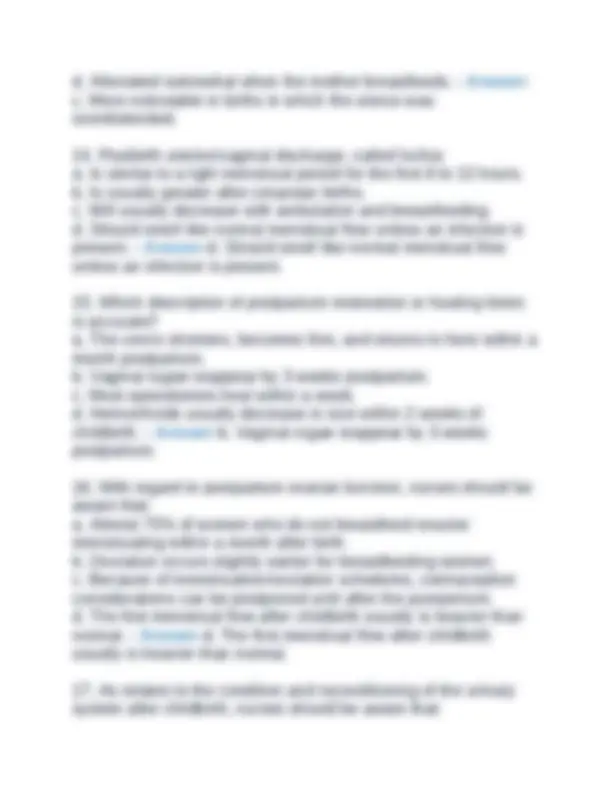
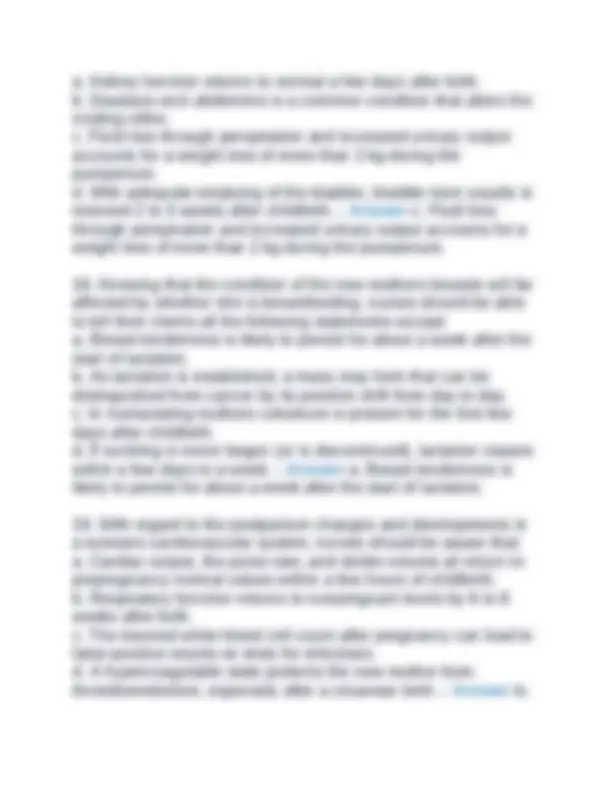
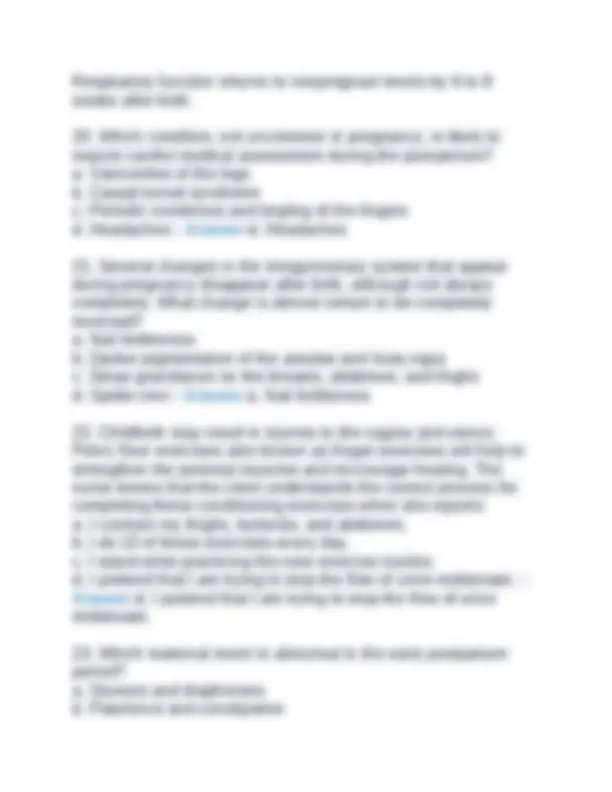
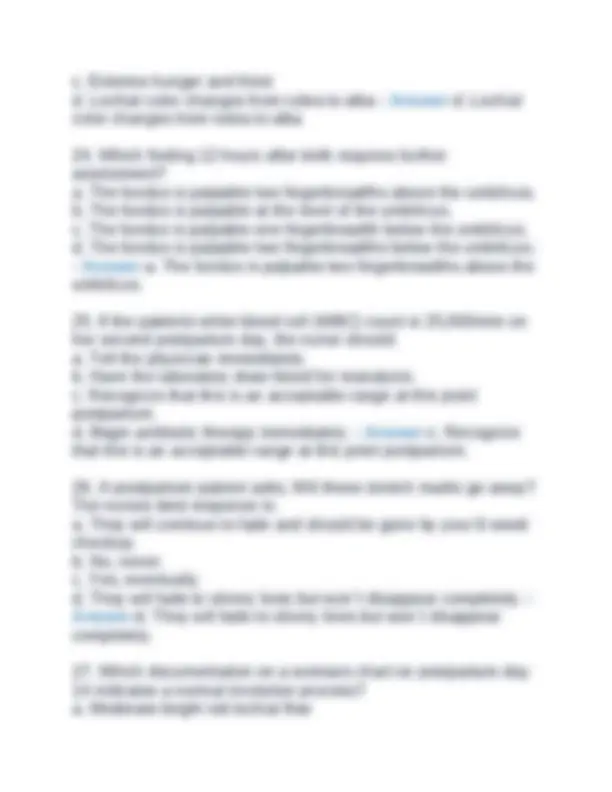
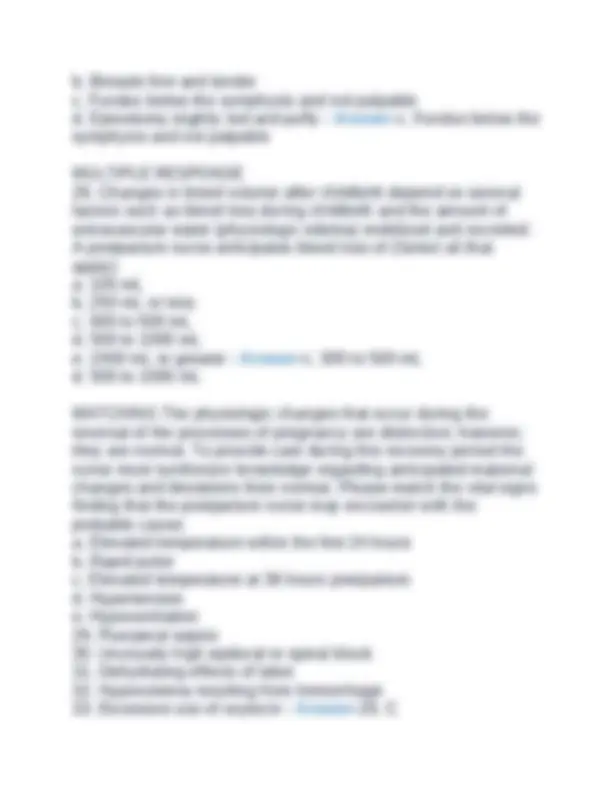
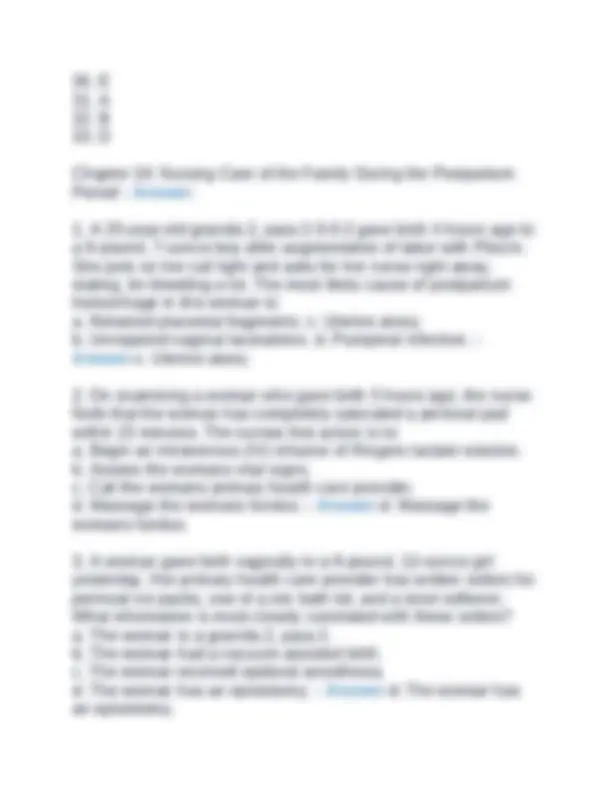
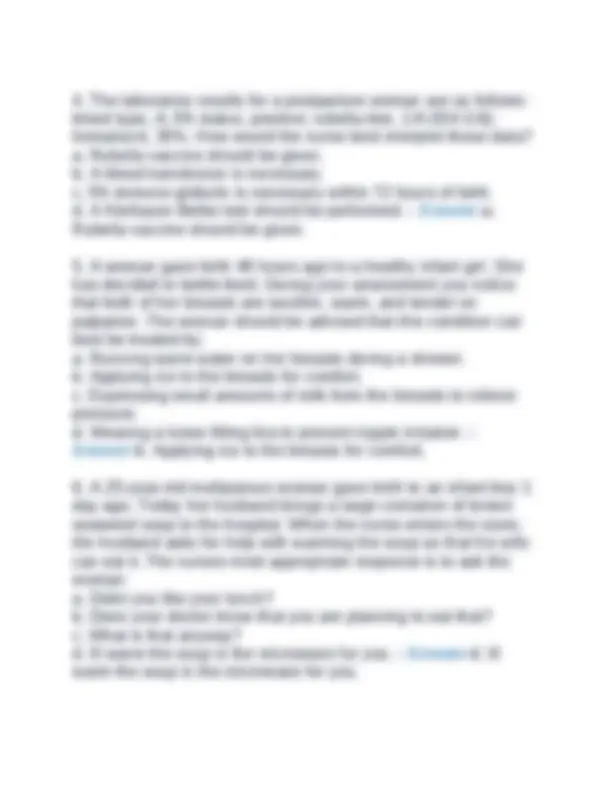
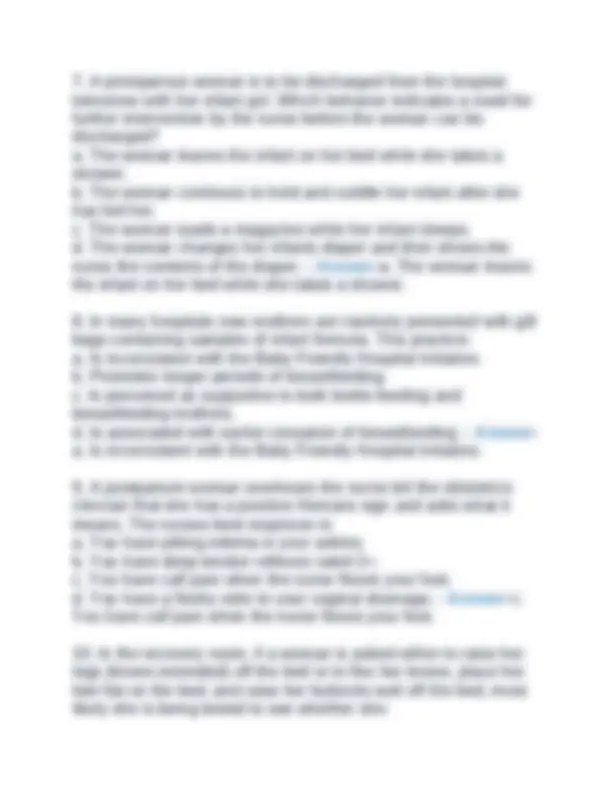
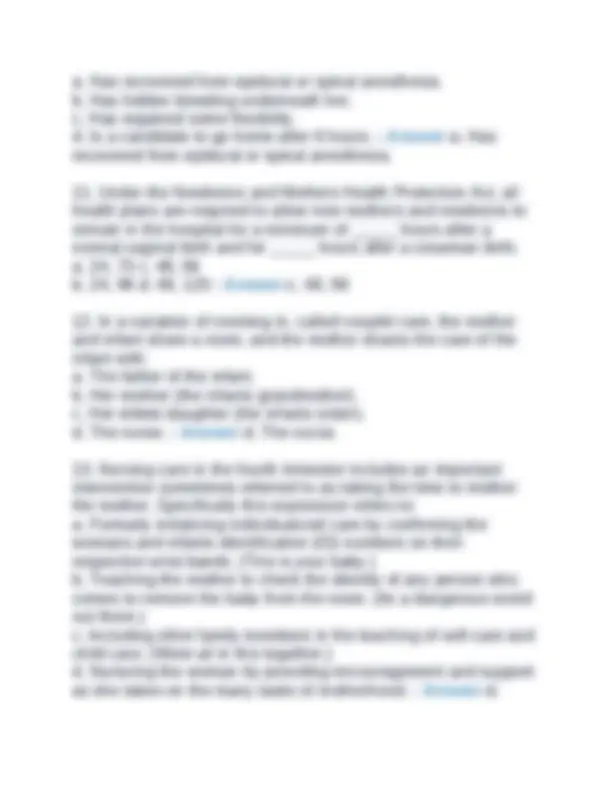
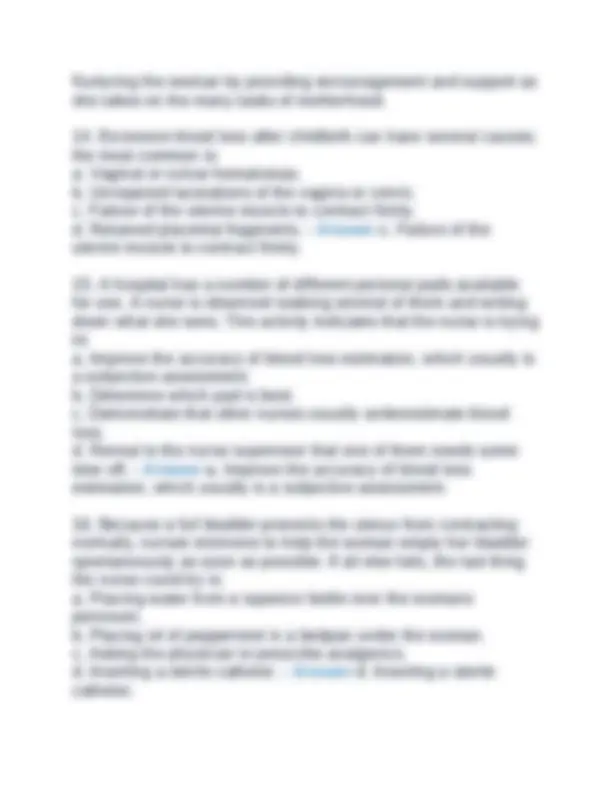
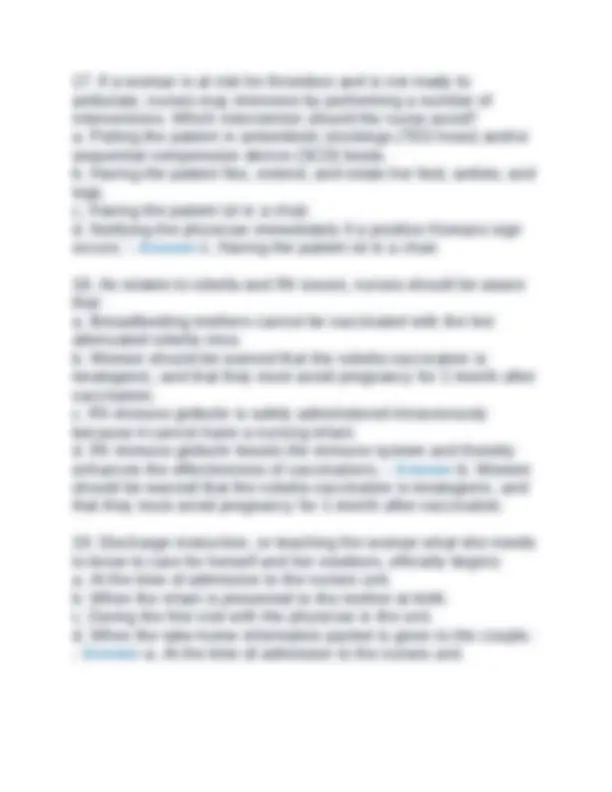
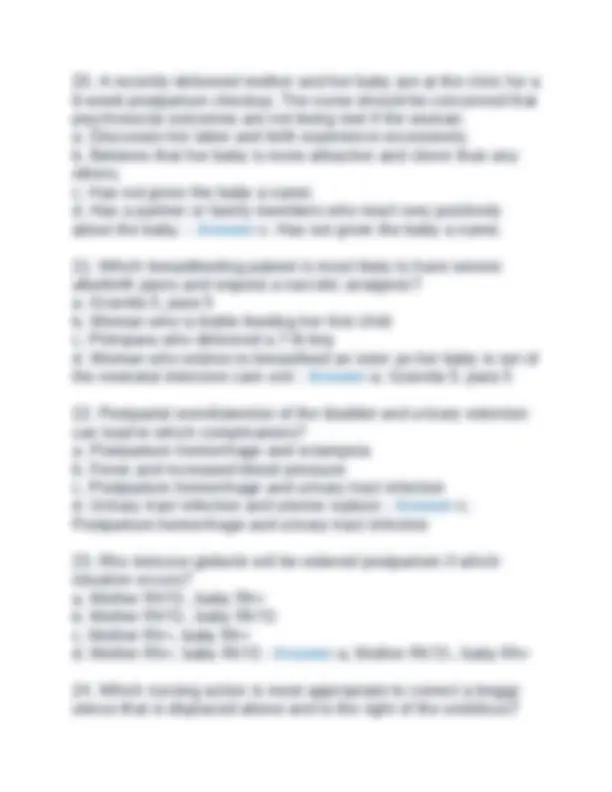
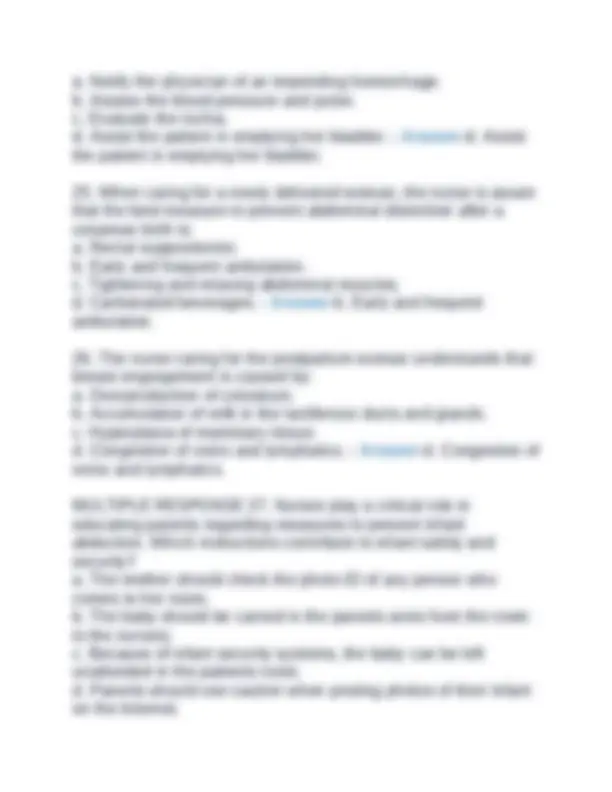
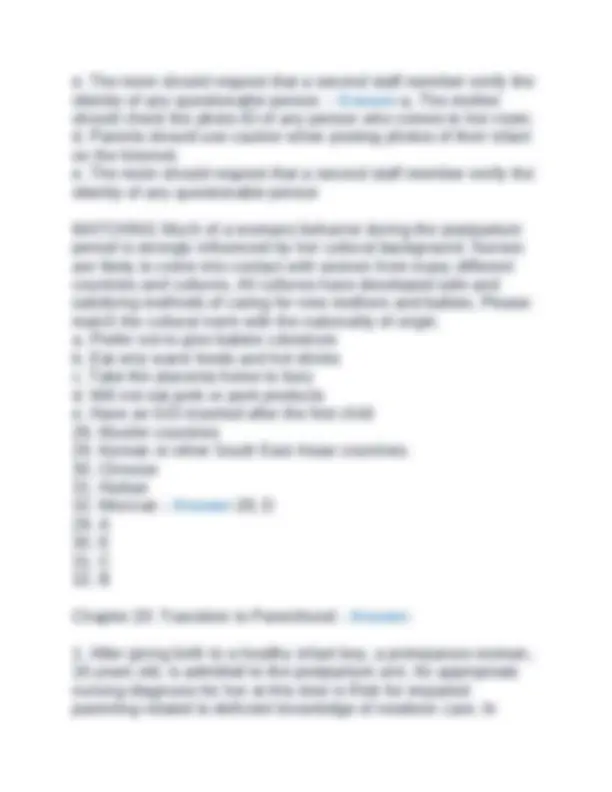
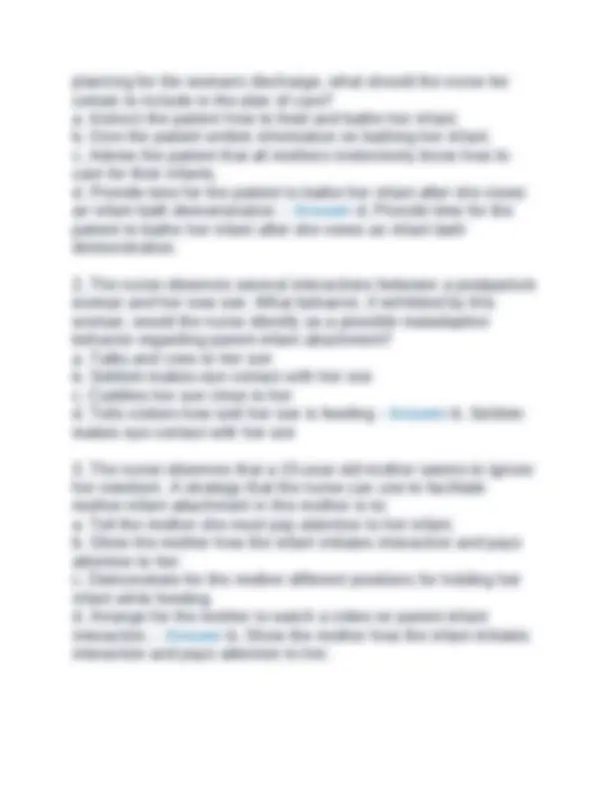
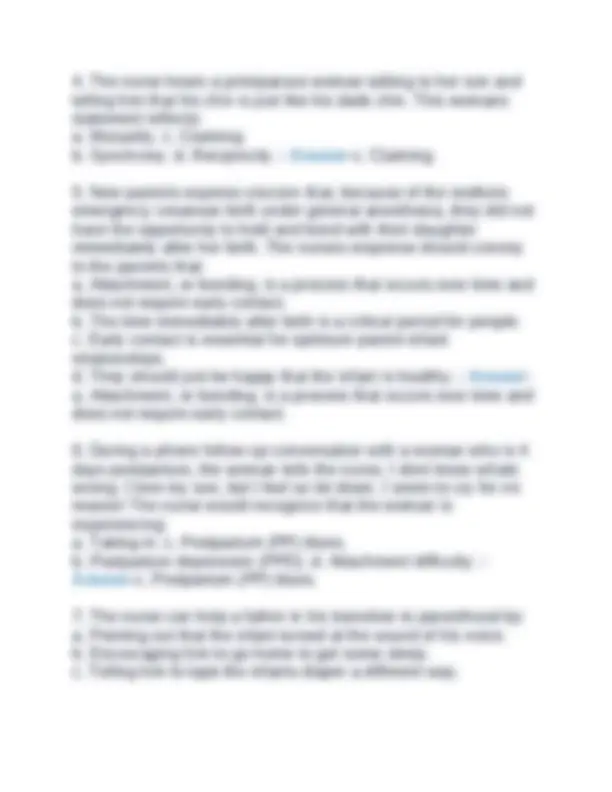
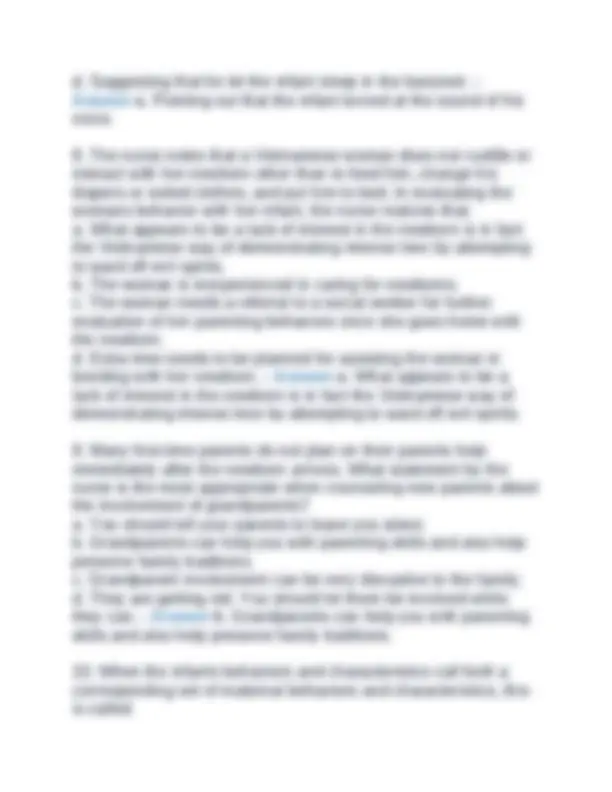
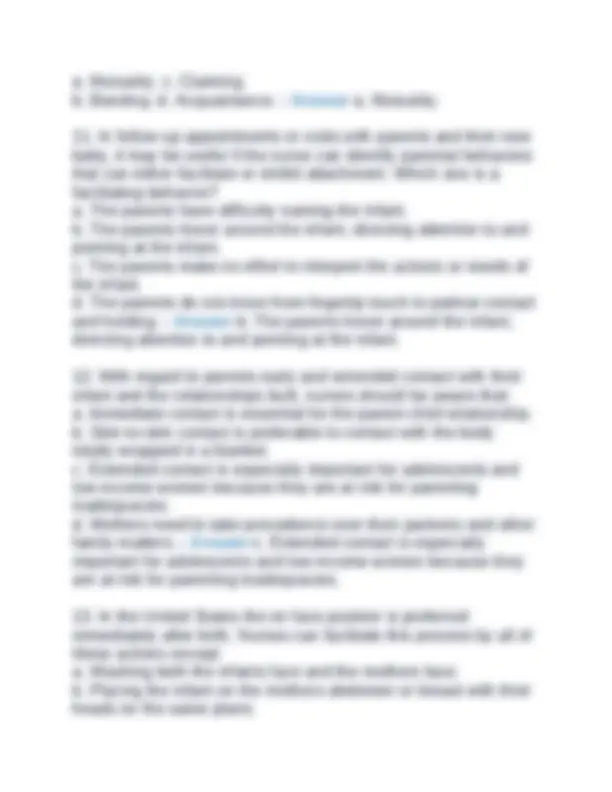
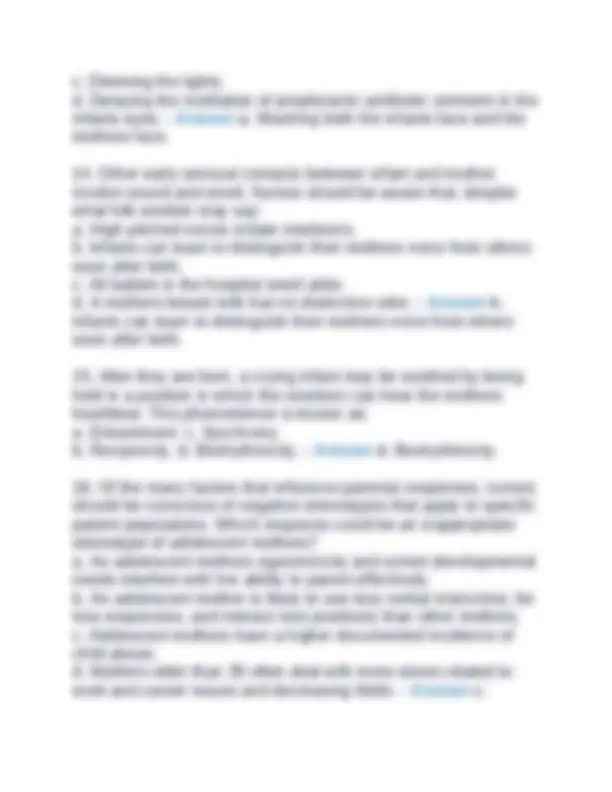
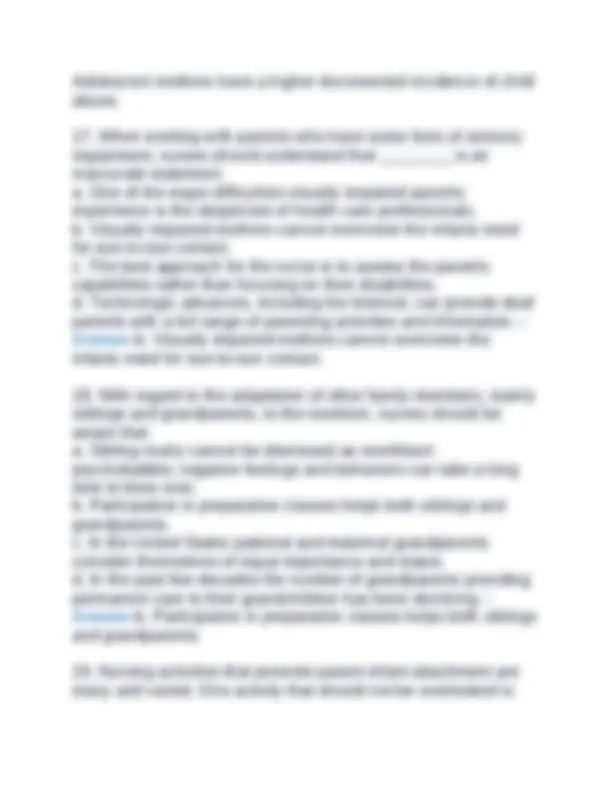
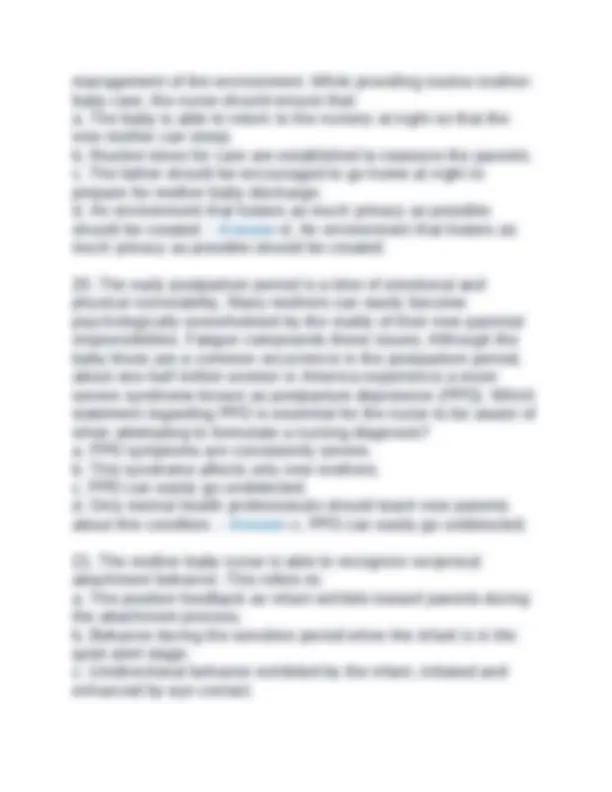
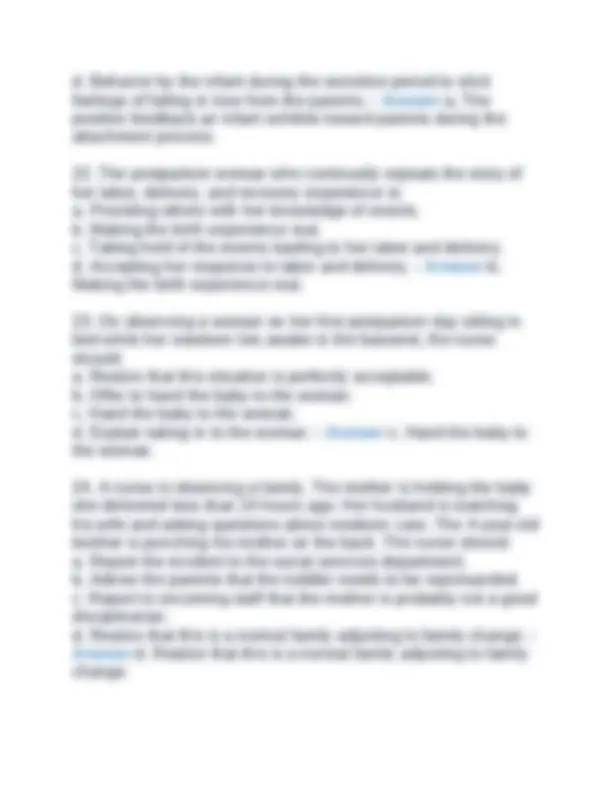
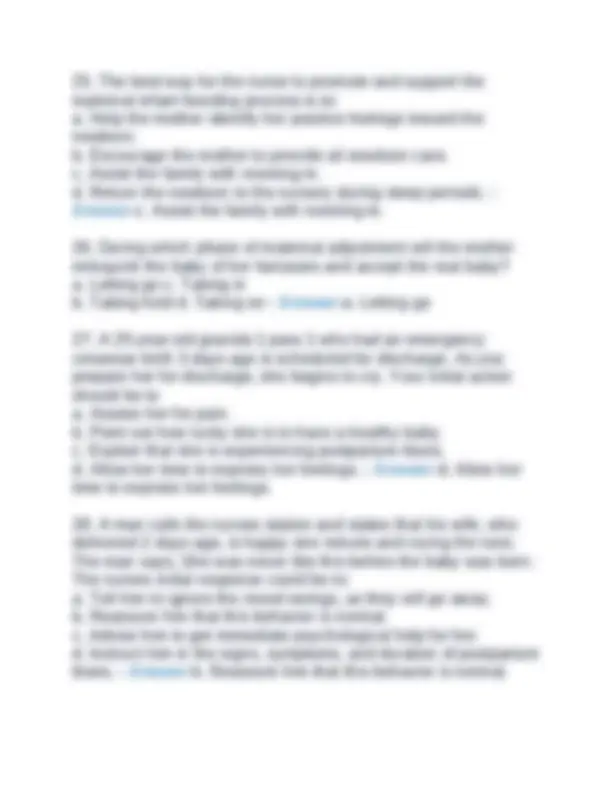

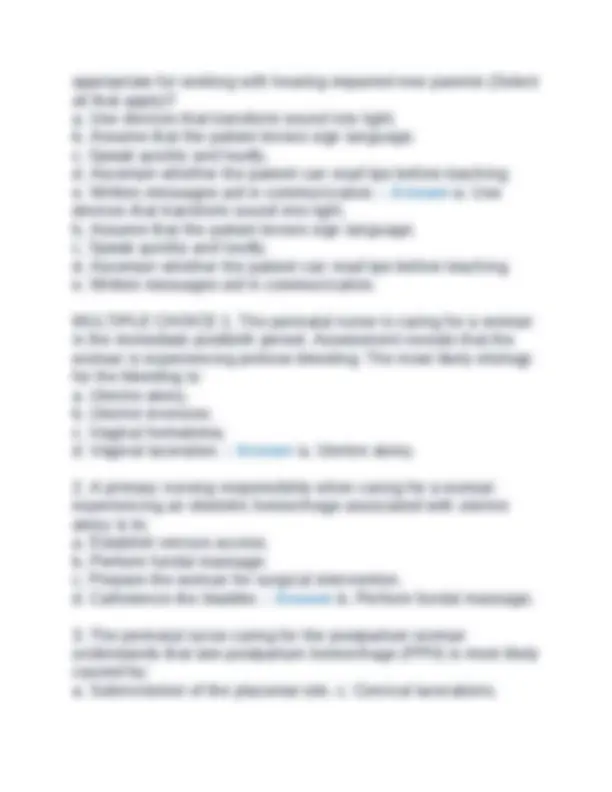
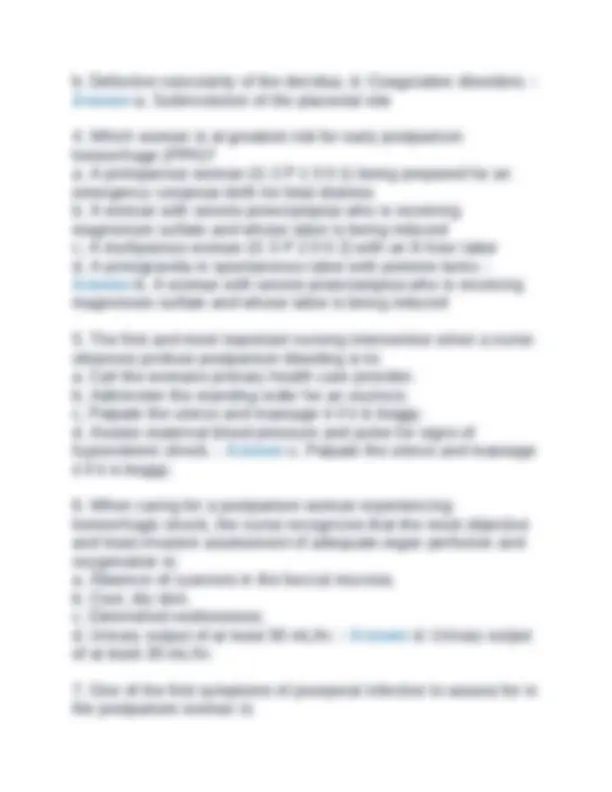
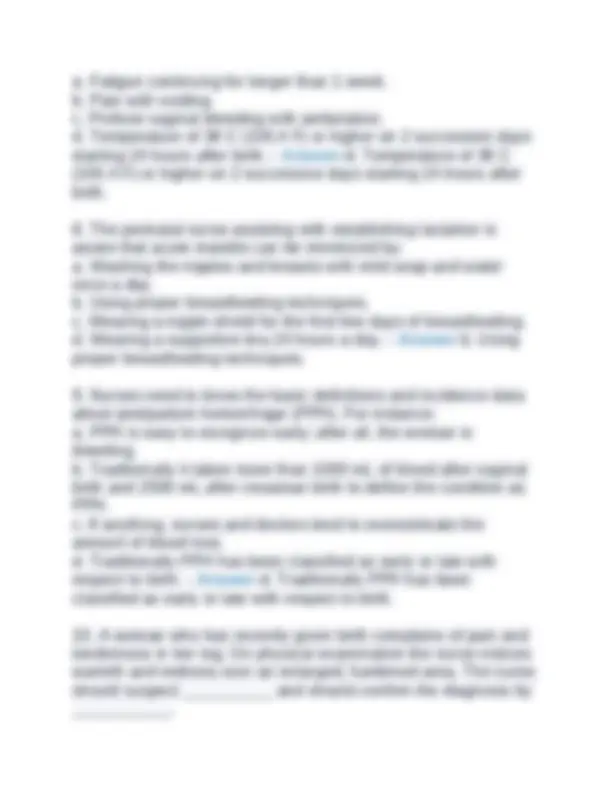
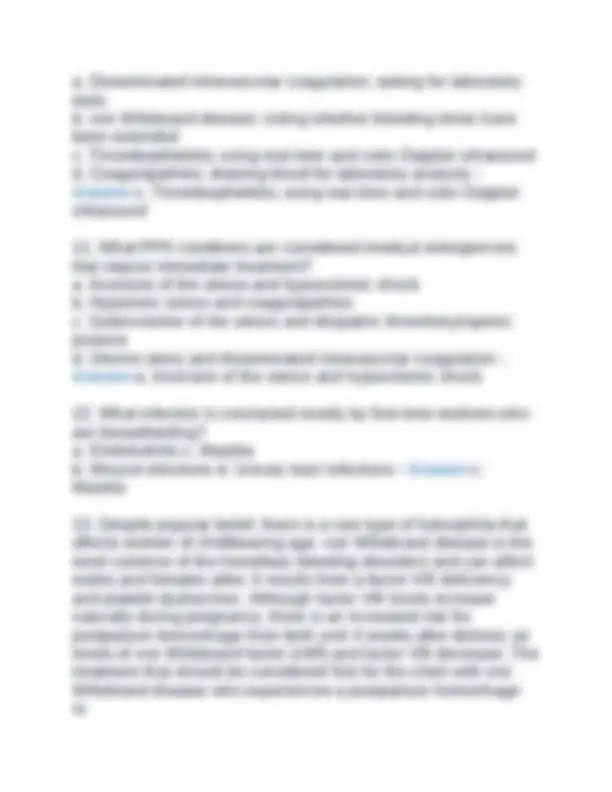
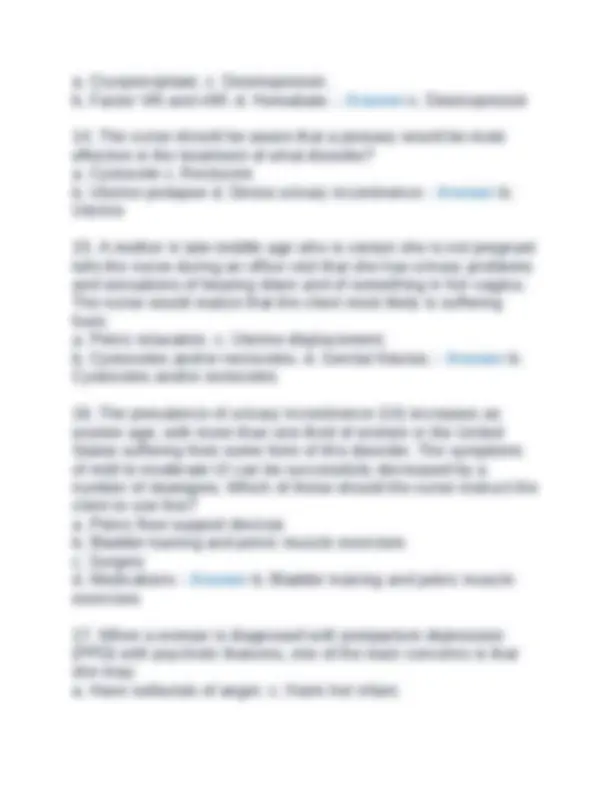
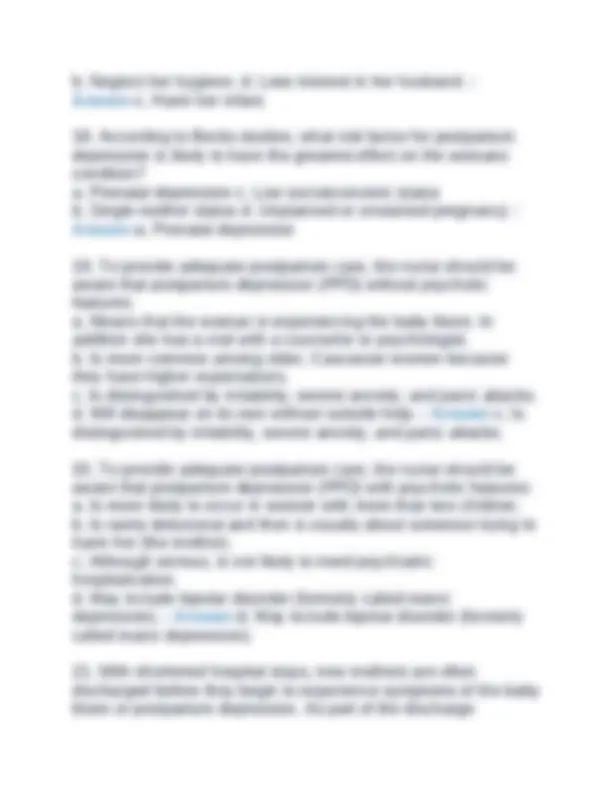
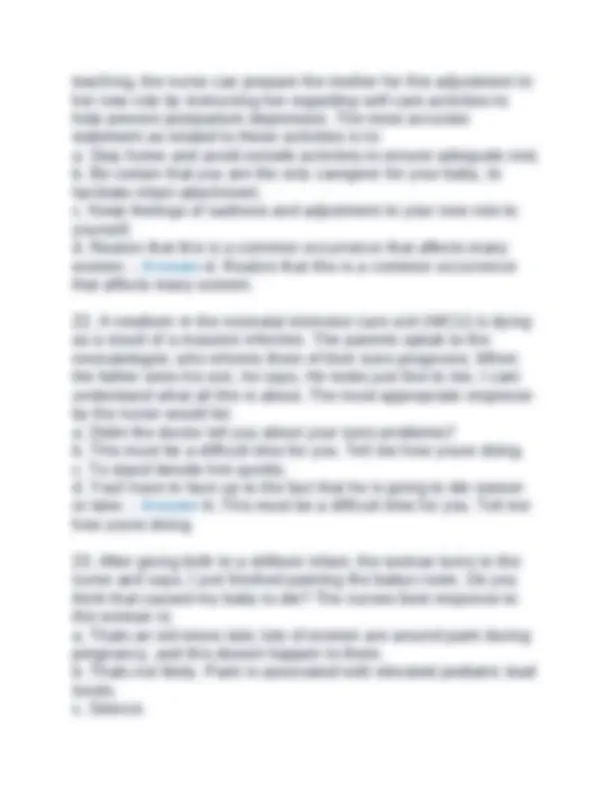
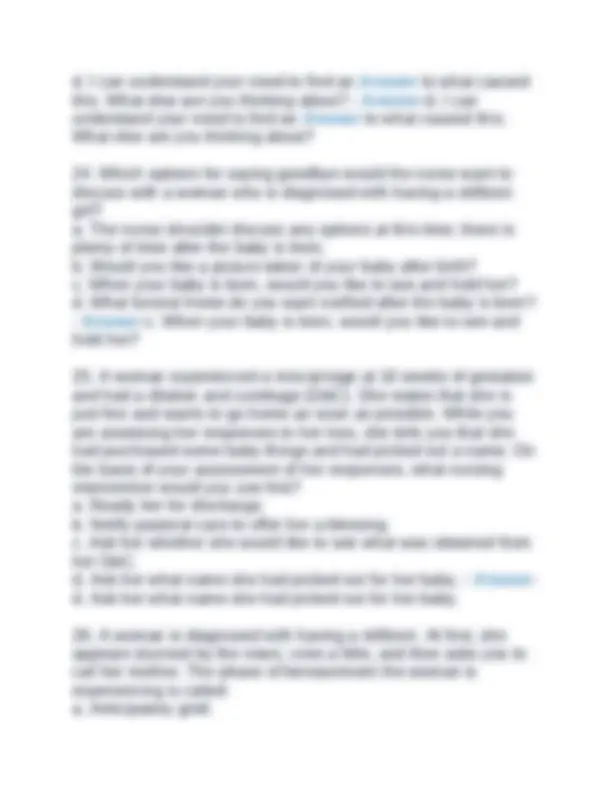
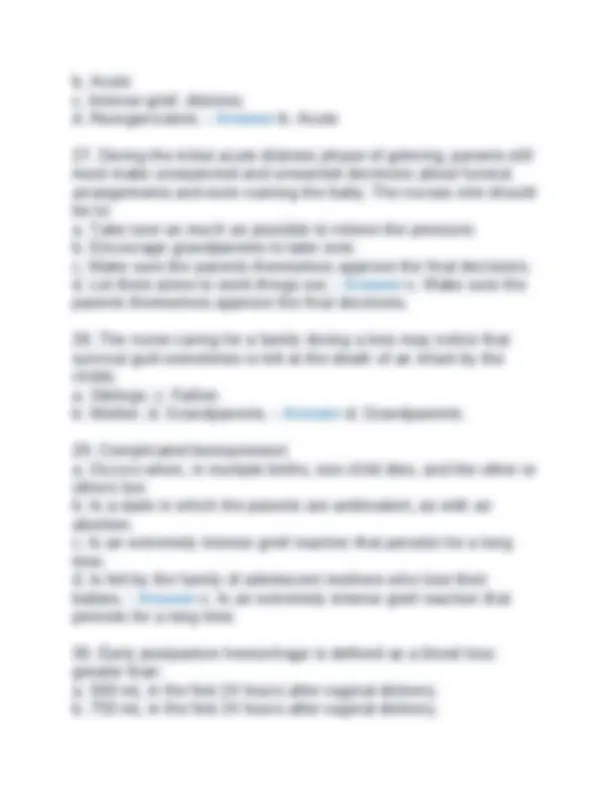
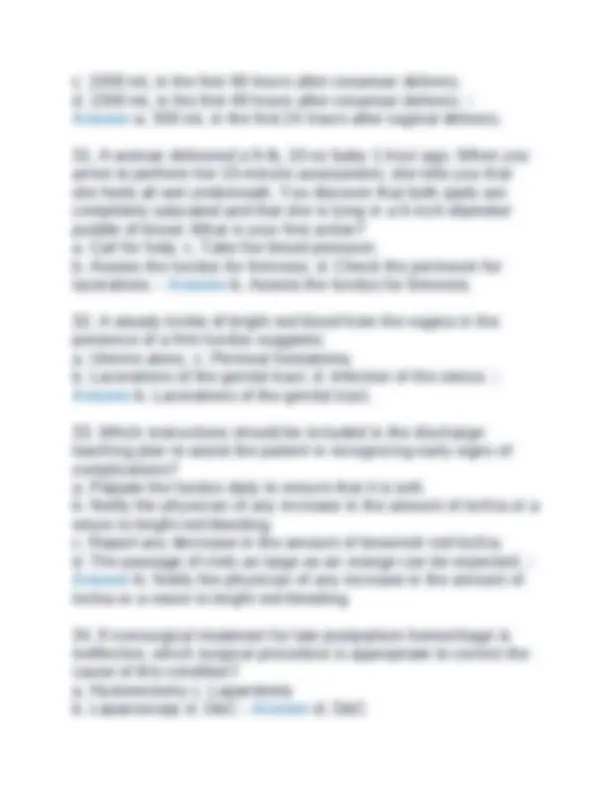
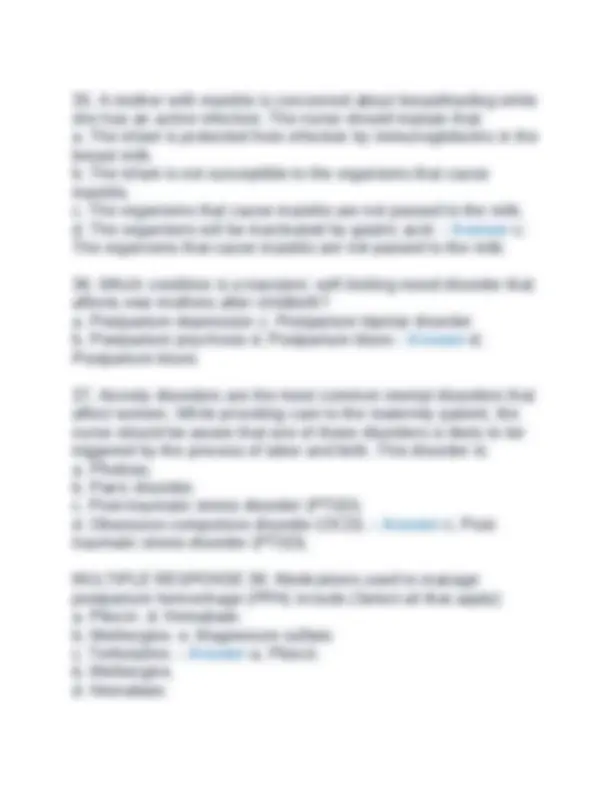
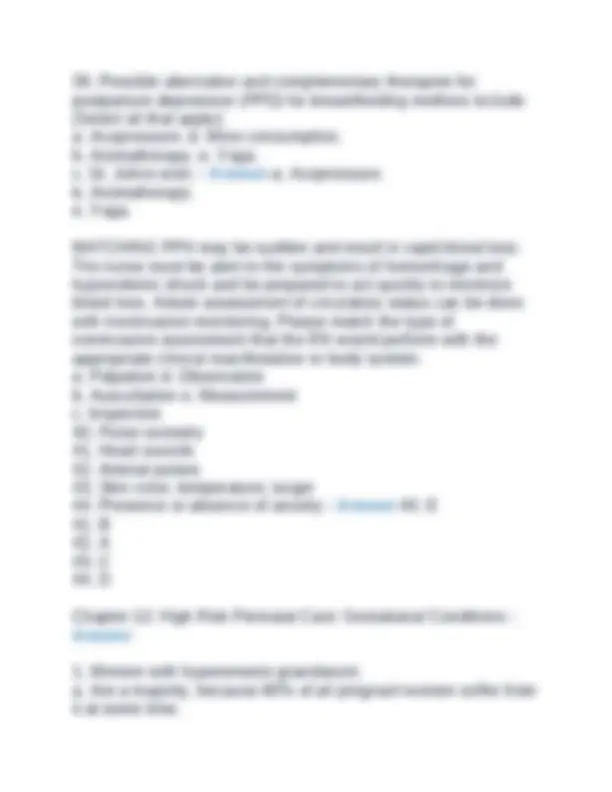
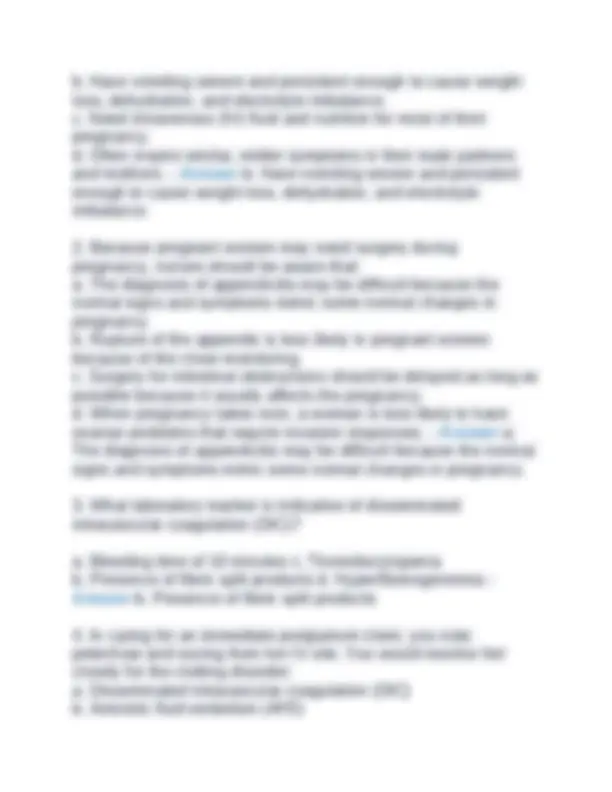
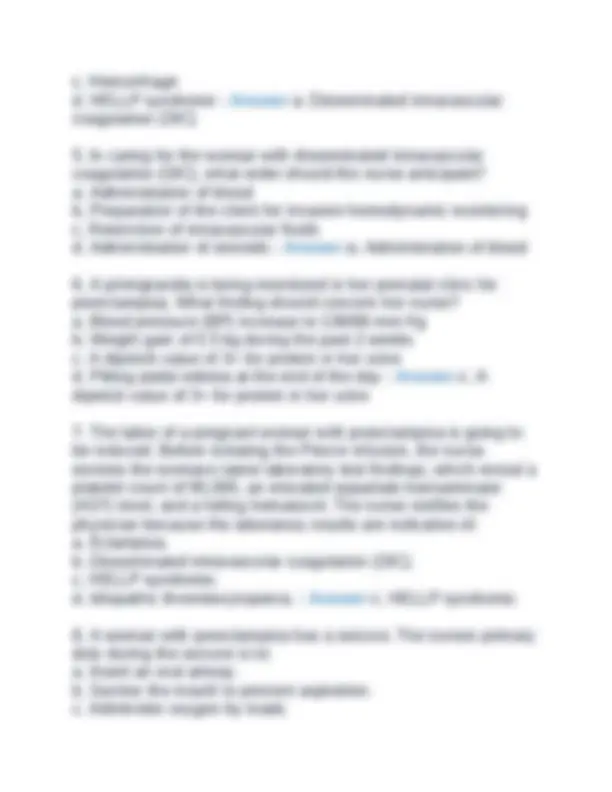
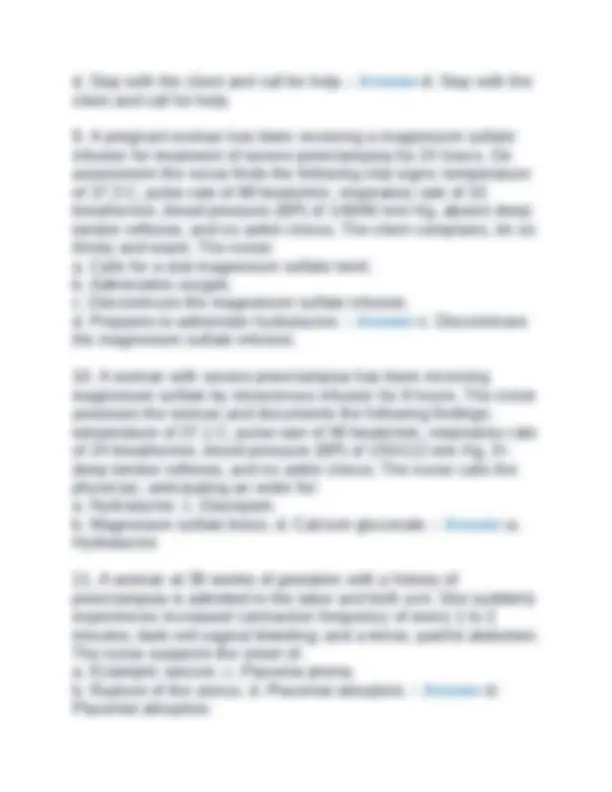
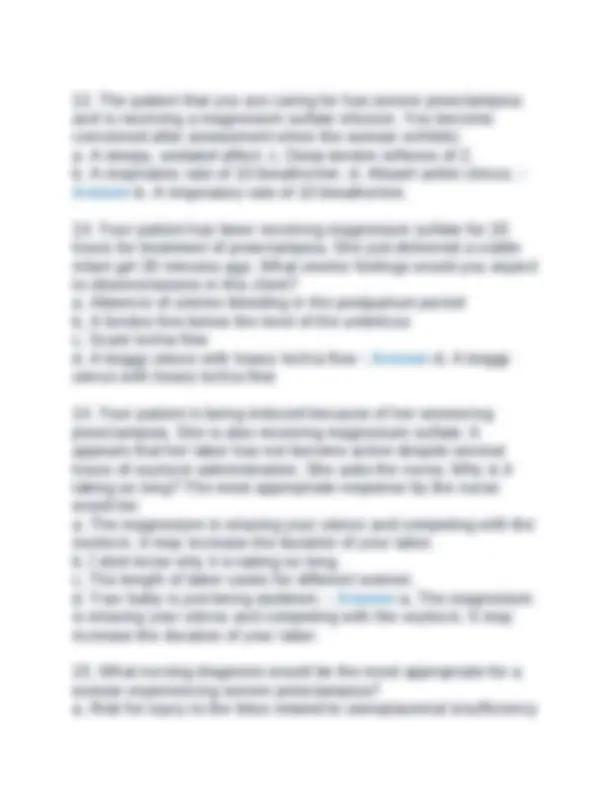
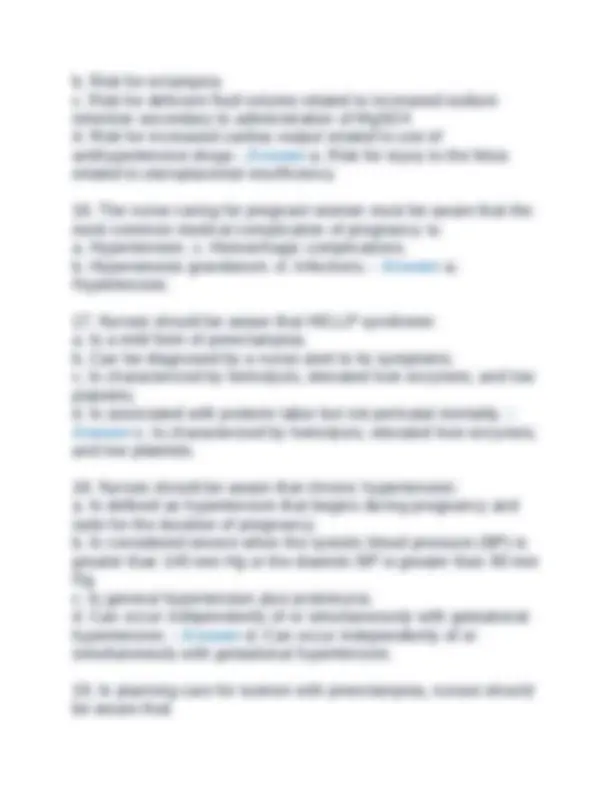
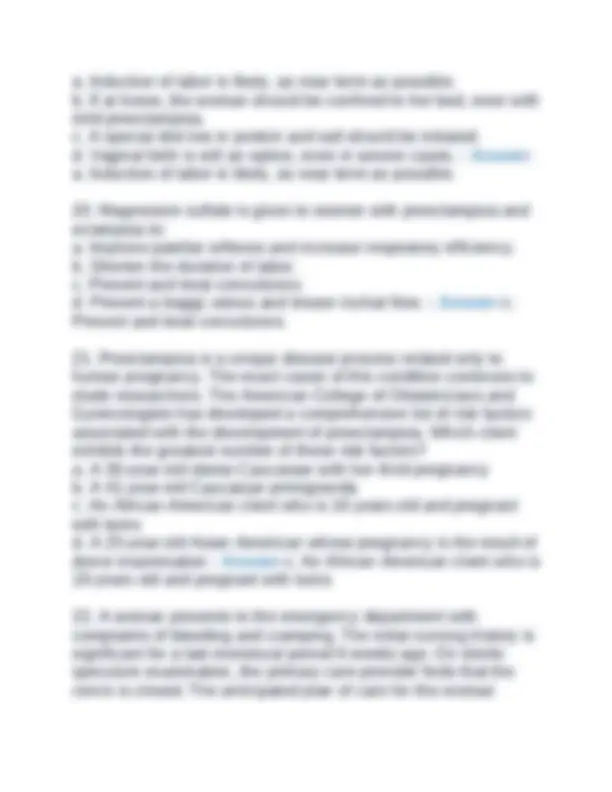
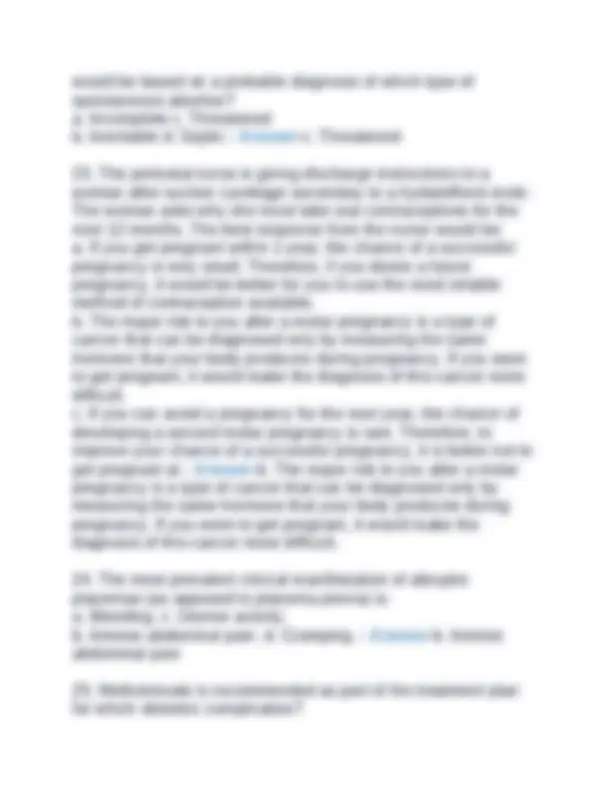
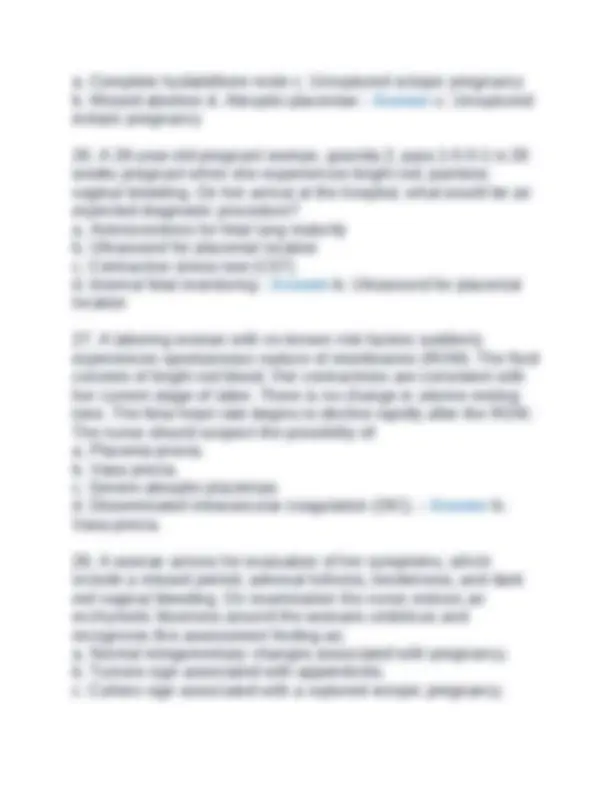
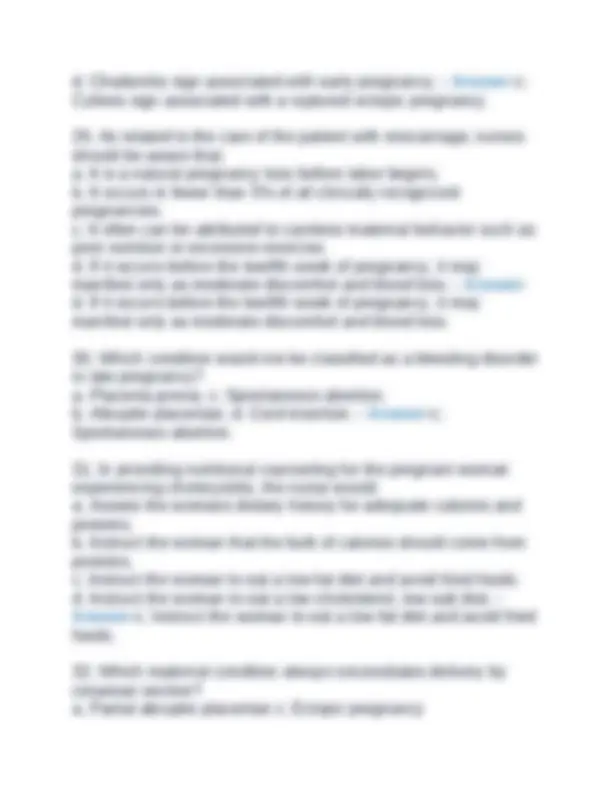

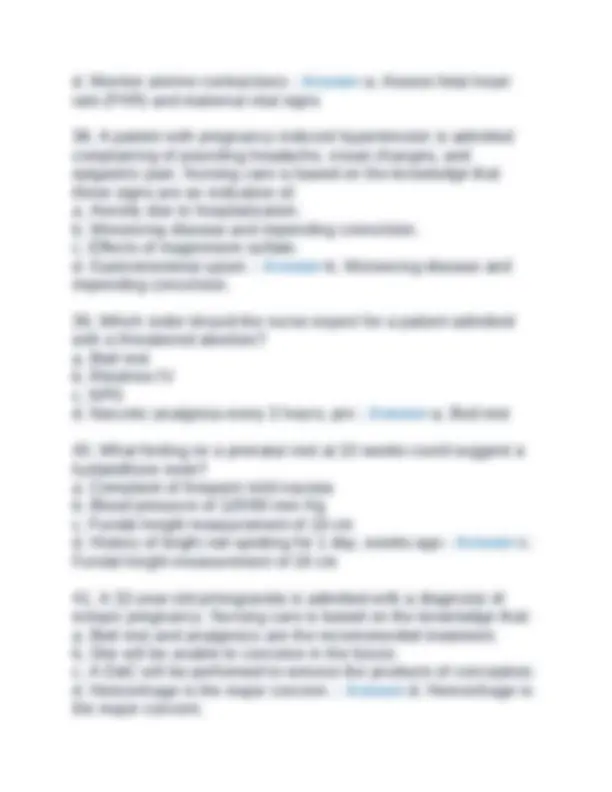
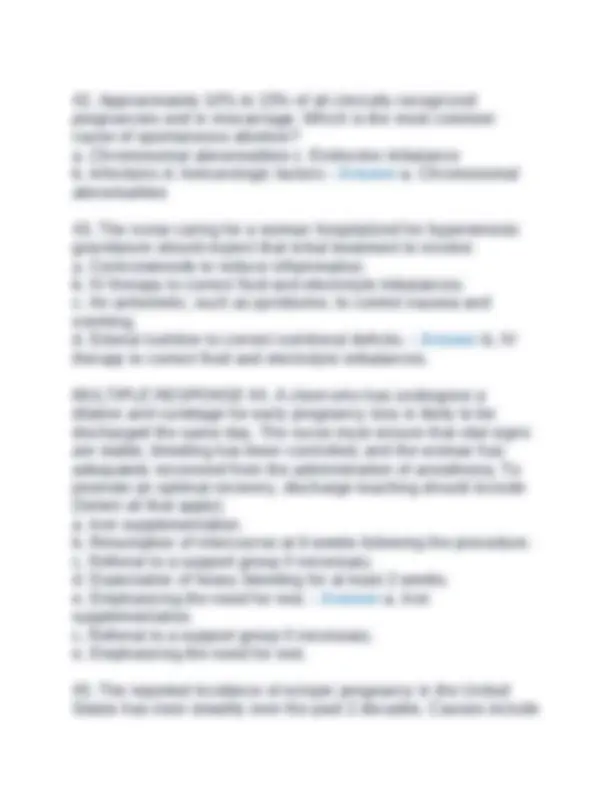
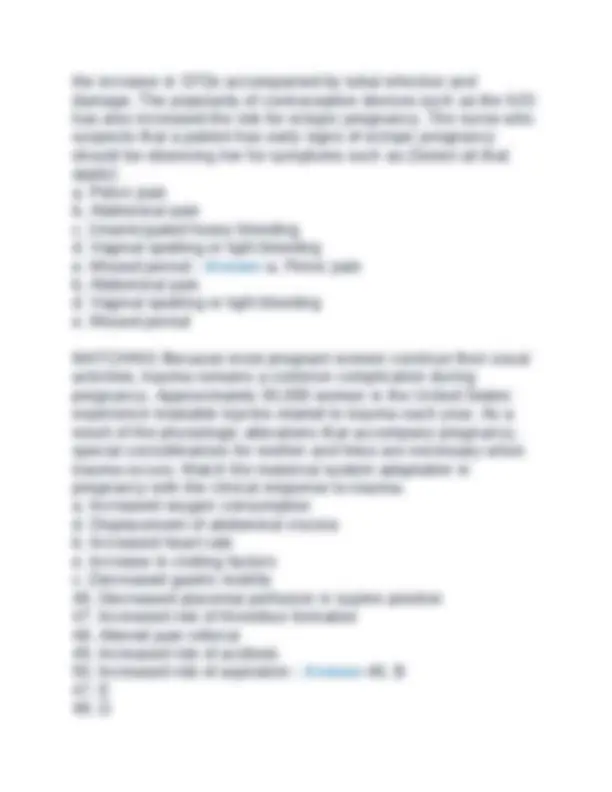
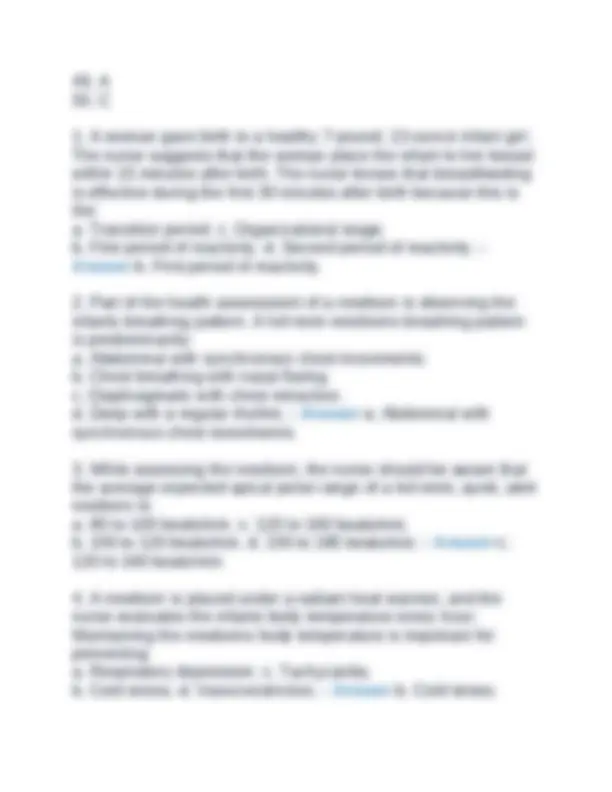
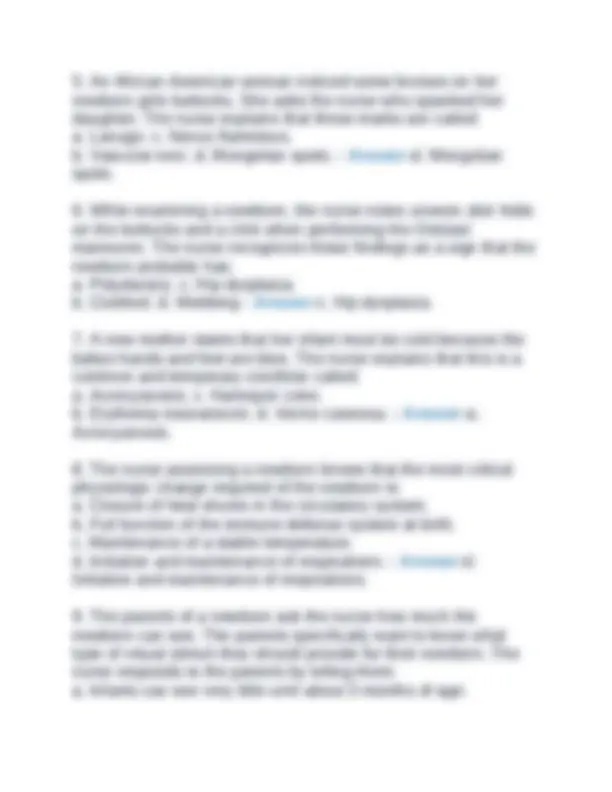
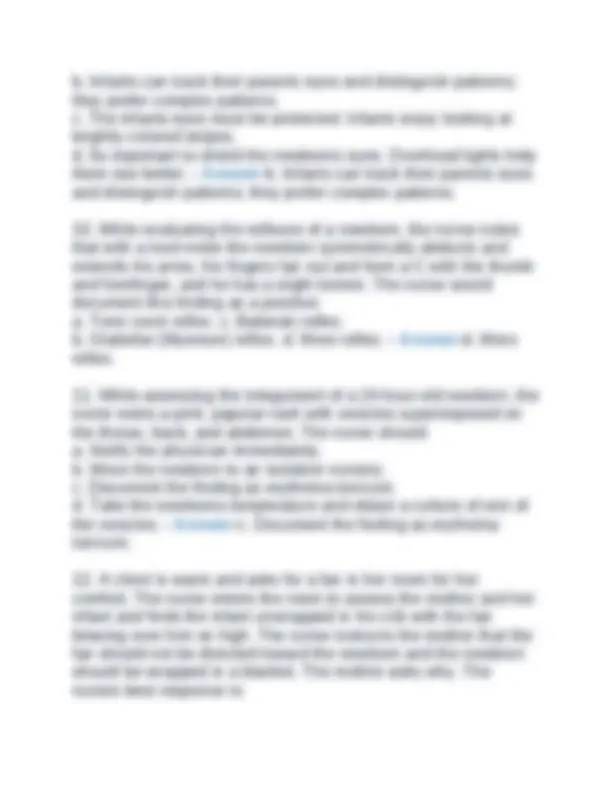


Study with the several resources on Docsity

Earn points by helping other students or get them with a premium plan


Prepare for your exams
Study with the several resources on Docsity

Earn points to download
Earn points by helping other students or get them with a premium plan
Community
Ask the community for help and clear up your study doubts
Discover the best universities in your country according to Docsity users
Free resources
Download our free guides on studying techniques, anxiety management strategies, and thesis advice from Docsity tutors
Test Bank for Maternity and Women’s Health Care, 13th Edition, Chapter 1-37, (2025), All Chapters | LATEST Update| Test Bank Directly From The publisher, 100% Verified Answers. Test Bank for Maternity and Women’s Health Care, 13th Edition, Chapter 1-37, (2025), All Chapters | LATEST Update| Test Bank Directly From The publisher, 100% Verified Answers.
Typology: Exams
1 / 129

This page cannot be seen from the preview
Don't miss anything!





























































































a. The cervix is effaced 3 cm, it is dilated 30%, and the presenting part is 2 cm above the ischial spines. b. The cervix is 3 cm dilated, it is effaced 30%, and the presenting part is 2 cm above the ischial spines. c. The cervix is effaced 3 cm, it is dilated 30%, and the presenting part is 2 cm below the ischial spines. d. The cervix is dilated 3 cm, it is effaced 30%, and the presenting part is 2 cm below the ischial spines. - Answer -b. The cervix is 3 cm dilated, it is effaced 30%, and the presenting part is 2 cm above the ischial spines.
d. Platypelloid: flattened, wide, shallow; 3% - Answer -d. Platypelloid: flattened, wide, shallow; 3%
b. Second stage: full effacement to 4 to 5 cm; visible presenting part; 1 to 2 hours c. Third state: active pushing to birth; 20 minutes (multiparous women), 50 minutes (first-timer) d. Fourth stage: delivery of the placenta to recovery; 30 minutes to 1 hour - Answer -a. First stage: onset of regular uterine contractions to full dilation; less than 1 hour to 20 hours
a. Bloody show c. Lightening b. False labor d. Bladder distention - Answer -a. Bloody show
e. Decreased fetal movement. - Answer -a. Lightening. c. Bloody show. d. Rupture of membranes.
b. Tell the woman to slow the pace of her breathing. c. Administer oxygen via a mask or nasal cannula. d. Help her breathe into a paper bag - Answer -d. Help her breathe into a paper bag
c. A pudendal nerve block is designed to relieve the pain from uterine contractions. d. A pudendal nerve block, if done correctly, does not significantly lessen the bearing-down reflex. - Answer -a. Most local agents are related chemically to cocaine and end in the suffix -caine.
c. Interpret a womans fist clenching as an indication that she is angry at her male partner and the physician. d. Evaluate the womans skin turgor to see whether she needs a gentle oil massage. - Answer -a. Have the woman use a visual analog scale (VAS) to determine her level of pain.
e. Perform a vaginal examination. - Answer -b. Place the woman in a lateral position. c. Increase intravenous (IV) fluids. d. Administer oxygen.
and so they remain underutilized. Published reviews of the best- known therapies identified the benefits of each modality for the woman in labor. Please match the alternative modality with the correct research finding. a. Yoga d. Water immersion b. Massage e. Aromatherapy c. Acupuncture